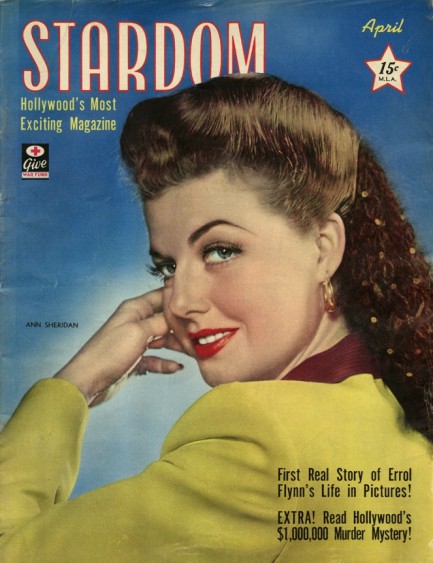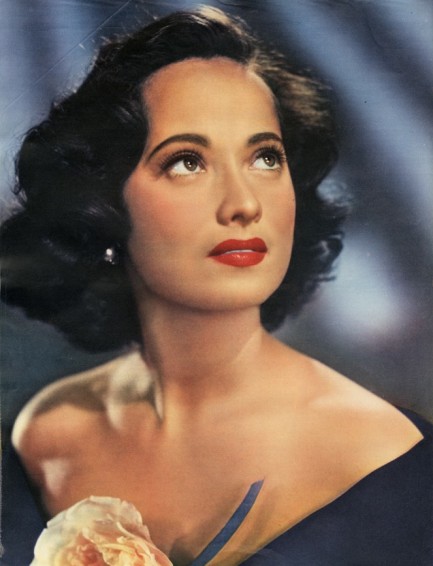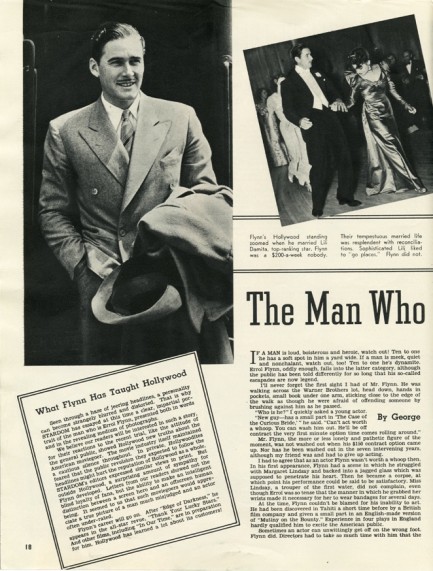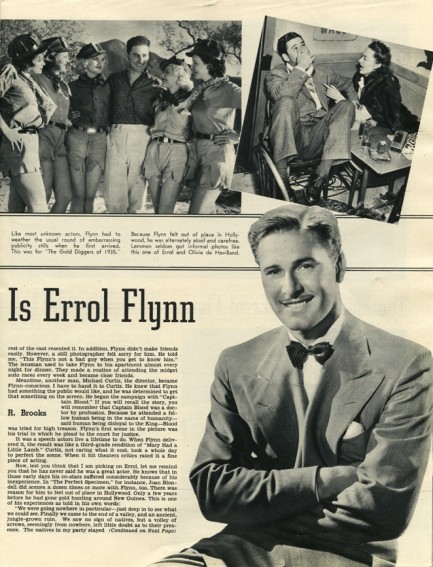 Errol Flynn takes readers back to the romantic South Seas of his youth. 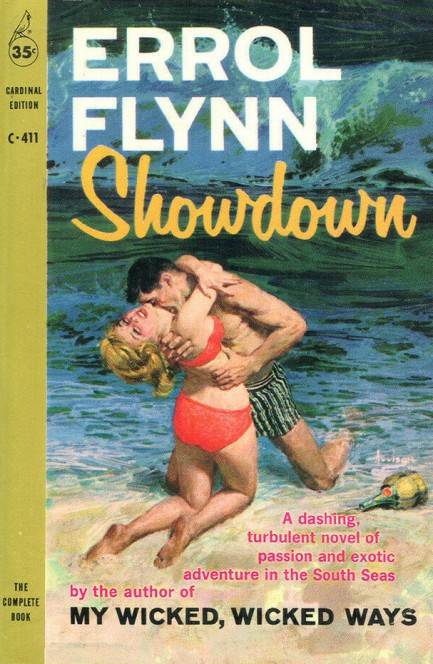
Above you see a cover for Showdown, which is a terrible name for this novel. It's evocative of nothing, a failing that's particularly egregious considering the story is set in the exotic South Seas. You may not have known that Errol Flynn was a novelist, but indeed he was, writing this and Beam Ends, plus his autobiography My Wicked, Wicked Ways, which you can consider fiction due to all the sticky episodes from his life it omits. Flynn was the equal of most popular fiction authors of his era, possibly even better than most, however Showdown, besides a better title, could have used an edit for conciseness in the first half. He goes into what we feel is unneeded detail into secondary characters, but even so, everything he writes is confident and steeped in tropical atmosphere.
In the tale, a British boat captain named Shamus O'Thames plies the waters around New Guinea, falls in love with a nun named Granice, and eventually takes on a charter of Hollywood types shooting second unit footage for a movie. It's an ill-advised trip, but he agrees to it mainly because it will take him near his nun's isolated jungle mission. Of course the voyage aboard his boat Maski does not go as planned, as the group end up stranded in headhunter territory. We could offer more details, but we don't want to spoil it for interested readers. We'll just say that it's a fantastic tale with unexpected turns, some of them hard to believe, but with the whole lent credibility by the fact that Flynn, who was from Tasmania, had numerous real life adventures in New Guinea before he became a star.
Showdown probably couldn't be published today due to its casting of native New Guinean people, known as Papuans or sometimes Melanesians, as either loyal servants or depraved villains. The book was originally published in 1946, a time when most white men didn't think of native peoples as owners of their own land, nor deserving of self determination. It's difficult to know exactly how Flynn himself felt about colonialism. We suspect, based on the narrative, that he might not have been entirely on the side of the forces of so-called civilization, but we'd have to re-read his autobiography to know for sure, and that book, sadly, vanished somewhere into the heart of darkness during one of our international moves. Flynn's adventurer O'Thames is certainly kinder than most, but can't be called enlightened by any stretch.
Anyway, Showdown is worth reading, bad title and all (by the way, we totally get the inference of a showdown not only between characters, but between cultures—it's still a bad title). Flynn covers land and sea, love and hate, race and racism (however inadequately), and ultimately, like other authors in this sub-genre (see here and here), asks whether white men should be in the tropics at all. He doesn't have any new answers, but he certainly says what he wants to with some style and an abundance of conviction. He was open about the fact that he preferred being a novelist over being an actor. His personal foibles and failings aside, it's too bad he didn't write more.
 Want to keep a secret? Don't try it in Hollywood. 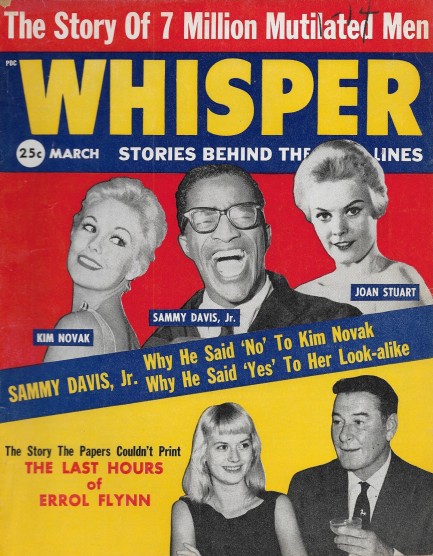
We wonder if any modern celebrity romances will be talked about half a century from now the way the old romances were. The way the Taylor/Burtons and Monroe/DiMaggios were talked about. We doubt it. Mid-century Hollywood and public romance seemed go hand in hand, and near the top of the legendary romance pyramid perches Sammy Davis, Jr.'s and Kim Novak's doomed love. Why doomed? Not to put too fine a point on it, but a 1958 Gallup poll showed that a mere 4% of Americans approved of interracial marriage. Four percent! There has never been a scientific study that showed anything other than deeply entrenched racial inequality and animosity in the U.S., and that includes today. But four percent? That's the dark ages.
We've marveled over Kim Novak before, but in case you need a visual reminder look here. Yeah. So Sammy was smitten, and so was all of America. And Novak? She saw in Sammy... charisma maybe? It wasn't devastating looks. Even Davis spoke of himself disparagingly in terms of physical appeal. But he had it. Everyone said so. His it and Novak's it were magnetically attracted and led to a relationship they tried and failed to keep relatively quiet. It's here, though, where we must note that the many Hollywood insiders who say Davis and Novak were knocking boots don't include Novak. She claims they were never more than friends. But when two megastars continually show up—however discreetly—in public together, people will talk. More importantly, tabloids will talk. And perhaps most concerning of all, Whisper will talk.
The above issue published this month in 1960 purports to have new info about the maybe-affair that shook Hollywood to its foundations, and also claims to have the scoop on Sammy's post-Kim fling Joan Stuart. We've seen many stories about his Swedish wife Mai Britt—also called a Kim copy by tabloids—but this is the first we've seen about Stuart. She wasn't Davis's first post-Novak partner. He married actress Loray White in 1958, but divorced her in 1960. Rumor is he married her under duress, having been told by certain Mafia figures to marry a black woman or else lose another eye. Whisper says that story isn't true.
Stuart was a Canadian actress, just starting out in show business. Whisper gets quotes from her parents about their daughter's relationship with Davis, and they aren't supportive. Shocking as that may be. The magazine's final take is this: “Boy meets girl. Boy gets girl. Boy loses girl. Boy meets another girl just like the girl he had before. Boy gets girl. And boy seems to be going to keep girl.” Davis did want to keep her, telling friends and reporters he wanted to marry her, but their pairing didn't last. Stuart went on to appear in some television shows and one movie—1978's In Praise of Older Women—but did not have a notable career. Did romance with Sammy Davis, Jr. hurt her? You'd have to think so—with about 96% of the public. We have some scans below, and more from Whisper to come.
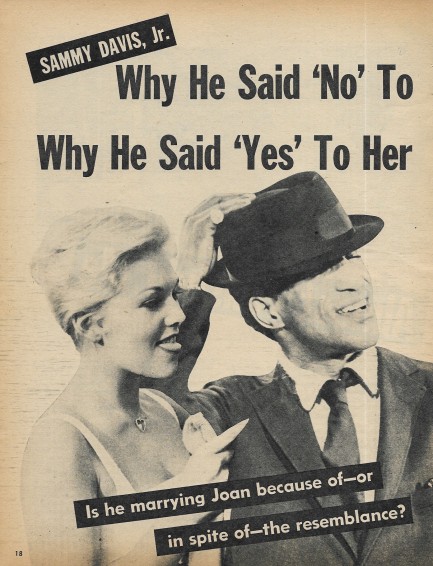 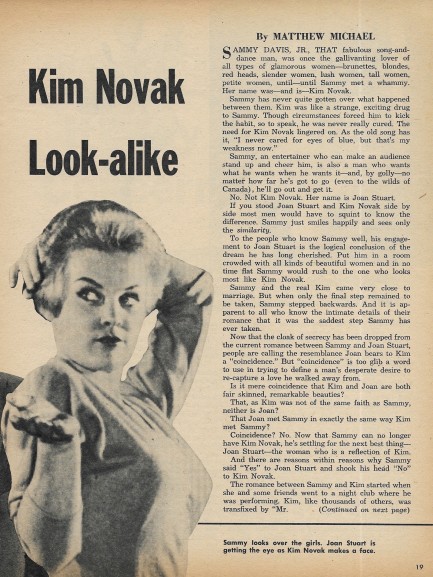 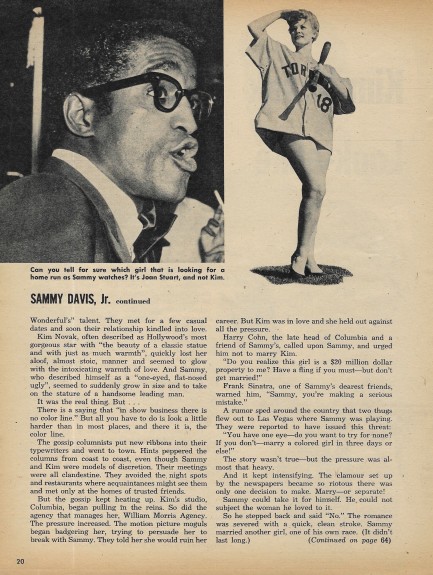 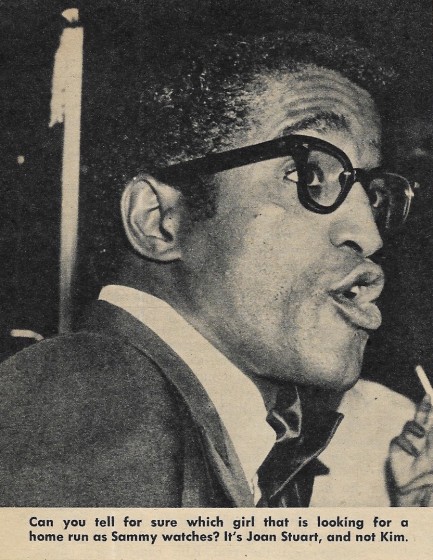 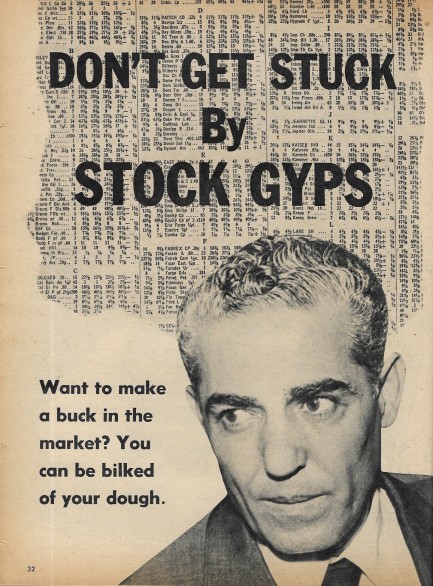 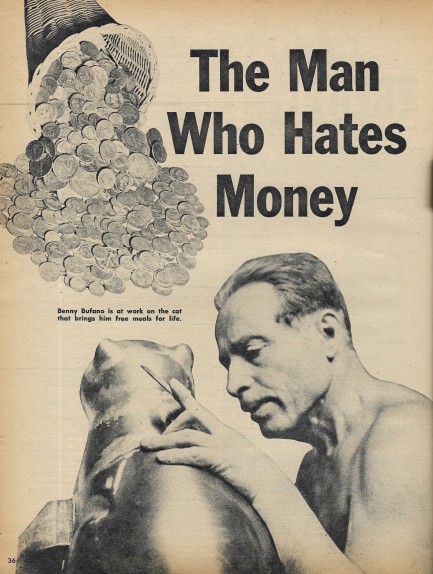 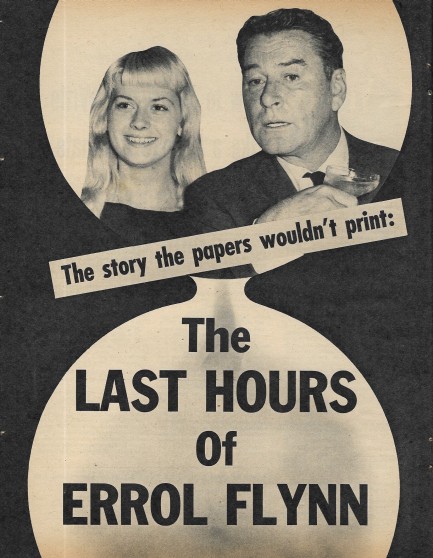 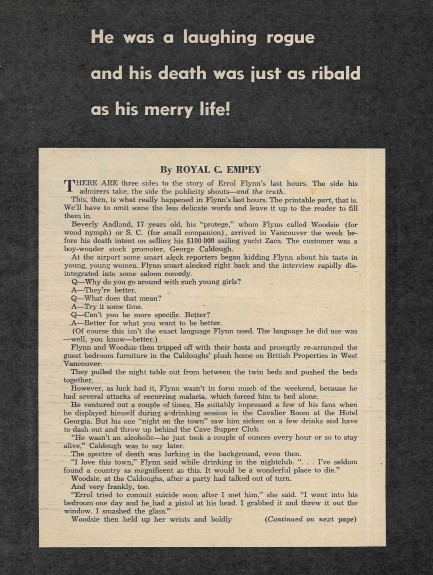 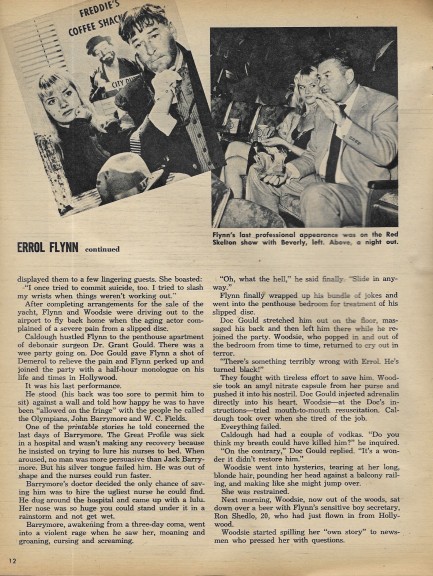 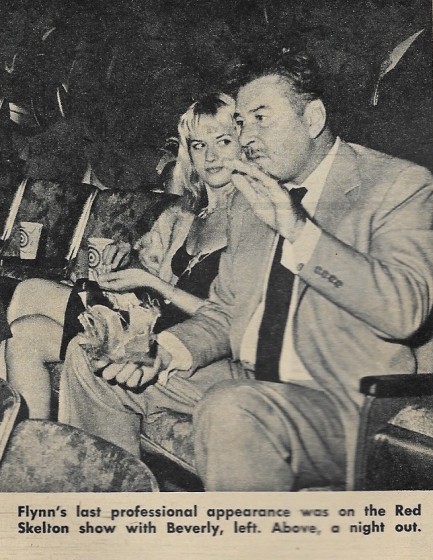 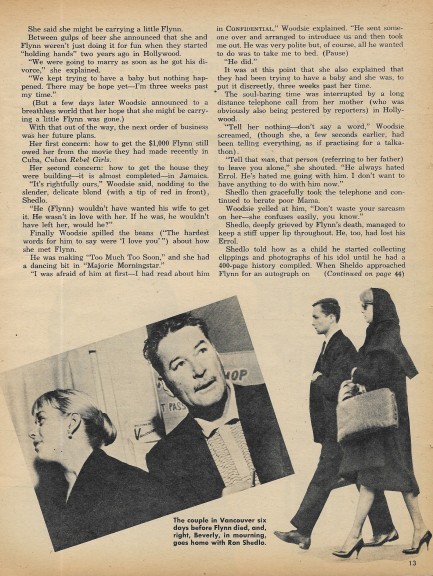 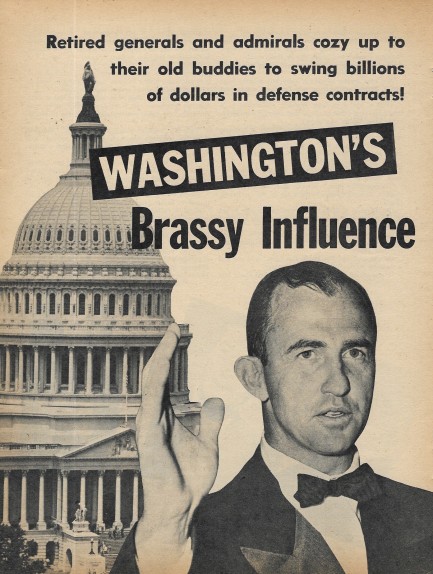 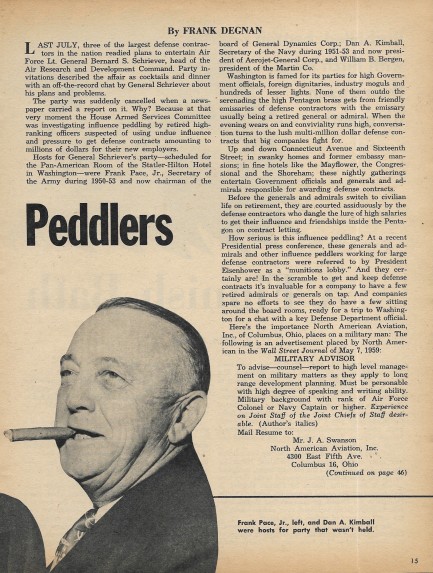 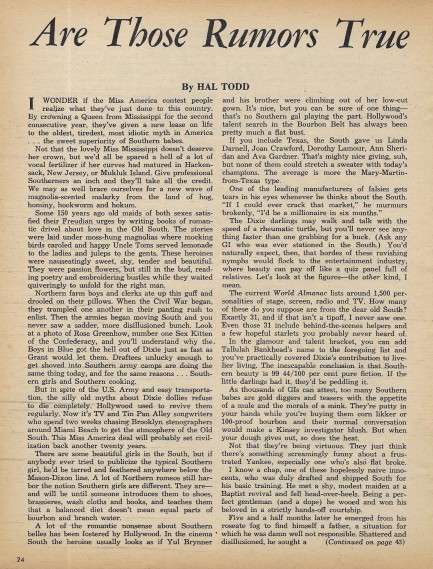 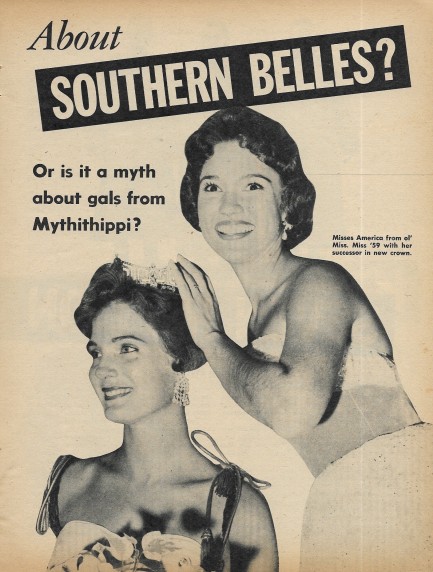
 Whether by day or night the action was non-stop. 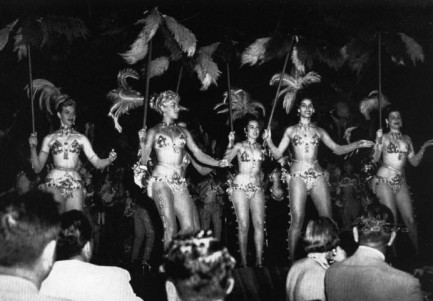
We love vintage nightclub photos, and vintage pix of people partying in general. Since Havana photos are unusually interesting, we're always drawn to them. There's a large number of Havana photos out there, but not primarily because of Cuba's political history. The photos really exist because Cuba was a pioneer of Caribbean tourism, attracting travelers beginning in the 1920s through a heyday of the mid-1950s. The island was promoted as a place of sophistication, mixed with permissiveness, unpredictability, and a touch of the primitive. This prompted various movers and shakers—from New York City businessmen to top musicians to Hollywood stars—to flock to Havana. And where important people went, cameras followed.
Was the Havana image true? Probably, based on what we've read. But it was not unique. During the same period Tangier had a similar reputation, as it attracted writers like Paul Bowles, William S. Burroughs, and numerous gay expatriates. During the 1960s Acapulco was known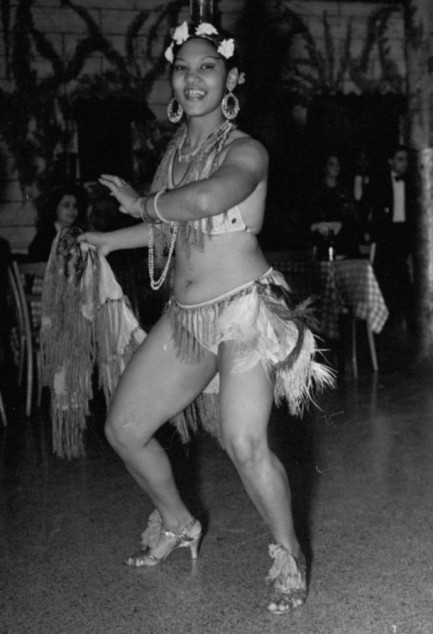 as a great place to go for thrills. During the 1980s, Ibiza or Mykonos. The 90s, Thailand or Goa. The 00s, Tulum. Havana wasn't unusual in terms of what it offered. Bigger, yes. More convenient for Americans, for sure. But numerous far flung locales have served as paradises for foreign visitors to lose themselves and get crazy. as a great place to go for thrills. During the 1980s, Ibiza or Mykonos. The 90s, Thailand or Goa. The 00s, Tulum. Havana wasn't unusual in terms of what it offered. Bigger, yes. More convenient for Americans, for sure. But numerous far flung locales have served as paradises for foreign visitors to lose themselves and get crazy.
Most or all of the aforementioned places are considered to have changed for the worse, whether through ecological damage, destruction of historic architecture, unchecked overbuilding, overtourism, or all four scourges at once. But it was revolution that changed Havana, a fact that gives vintage photos from there a particular poignancy. A typical narrative is that while elites and tourists partied, exclusion, inequality, and poverty helped fertilize the seeds of upheaval. But we don't judge anyone in these shots. We've lived in similar circumstances in Central America. We were even partners in a beach bar in the Caribbean. We were always well aware of the prevailing socio-political problems, and we sympathized greatly with the local populations. But it didn't stop us from partying the nights away.
There's an immense feeling of freedom being in a simpler place—and for all its opulent nightclubs and restaurants, Havana is said to have exuded a primeval sensuality that intoxicated tourists and expatriates. If you live in the U.S. or some other modern nation, that feeling isn't something you can achieve by merely paring down your current lifestyle. The things you give up continue to exist all around you. By rejecting those, you become a weirdo. But by living in a less modern nation your life truly changes top to bottom, and you gain this while still existing above the local mean. That's the paradox, or the injustice, depending on your point of view: your satisfaction derives partly from the ability to take or leave anything you wish, because you are economically able to do so. You live more simply than you did, yet live better than most people around you. It isn't noble, but it's very much an attraction.
Bowles and Burroughs lived well in Tangier because it was immensely cheaper than Europe or the U.S. With the savings gained they hosted parties and had time to hone their literary crafts. They were a part of the local society, but existed in a middle-upper stratum, high above the impoverished, well below the Moroccan elites, benefitting from the general perception that foreigners from rich nations are themselves rich. That's how it was for us too. So there's inequality built into that type of expatriate experience. It's unavoidable. A friend of ours lived in a stick shack on Cayos Cochinos for an entire year and he was still considered a rich foreigner. Everyone knows you have a choice. The Americans who partied in Cuba could never have been anything but wealthy invaders, no matter the reality of their finances, or the inclusiveness their sensibilities. type of expatriate experience. It's unavoidable. A friend of ours lived in a stick shack on Cayos Cochinos for an entire year and he was still considered a rich foreigner. Everyone knows you have a choice. The Americans who partied in Cuba could never have been anything but wealthy invaders, no matter the reality of their finances, or the inclusiveness their sensibilities.
Living comfortably means the novelties one experiences seem thrilling or romantic. When we were knocking around Guatemala, El Salvador, and the Bay Islands, we turned washing our clothes by hand into an enjoyable ritual, yet understood quite well that many families' daily water intake literally depended on walking a mile to a river. Buying food from the local fruit and veggie stand was far more convenient than queuing at the supermarket for meat, and we ended up dropping to our college weight, but we were nevertheless aware that many people couldn't afford any food, and would have been disgusted at how pleased we were that our reduced fat intake meant we could show six pack abs at the beach. We helped some local families, both financially and logistically, but when your downsized existence is a choice you can never truly fit in.
But the freedom you feel is real. Offloading the burdens of modern life brings legitimate satisfaction. The pursuit of pleasure takes on a special joy. We hit bars, parties, and gallery mixers continually. As foreigners there's no social stigma to drinking every night. Unless you have a job—and we didn't—it's how you form a social circle. Locals generally disapprove, but their judgements carry little weight. So when we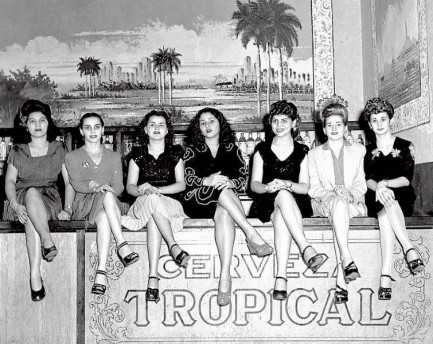 look at Havana partying shots we don't quite see oblivious, entitled people, because we know it isn't that simple. Most of them knew what was percolating. Stability was diminishing fast. There was a dissolved parliament, large protests, a 1953 battle in Santiago de Cuba, and other signposts on the way to change. It was clear the fun could never last. look at Havana partying shots we don't quite see oblivious, entitled people, because we know it isn't that simple. Most of them knew what was percolating. Stability was diminishing fast. There was a dissolved parliament, large protests, a 1953 battle in Santiago de Cuba, and other signposts on the way to change. It was clear the fun could never last.
The assortment of people you see here are caught on film like insects caught in amber, long dead but preserved. They're having a few laughs, enjoying some drinks, executing deft turns on dance floors, making their small, temporary marks on the world, leaving behind images showing them for one sliver of a moment in timeless eternity. Things changed in Havana, and now things have changed for all of us. If circumstances where we can dance and laugh and shout together in hot crowded places without fear of sickness ever return, be sure to embrace them fully. We don't just mean in some far flung tropical enclave. We mean anywhere. Because if it isn't a virus that takes those pleasures away, it'll be the march of years. You'll want to have done your best with this gift called life.
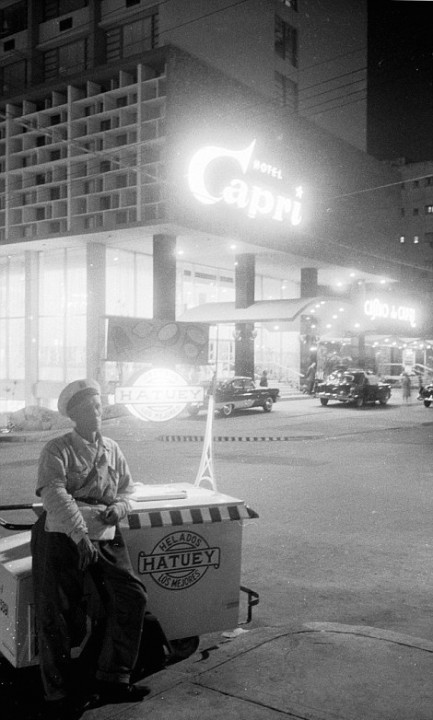 An ice cream vendor patiently waits for potential customers to emerge from the Capri Hotel and Casino, 1958. An ice cream vendor patiently waits for potential customers to emerge from the Capri Hotel and Casino, 1958.
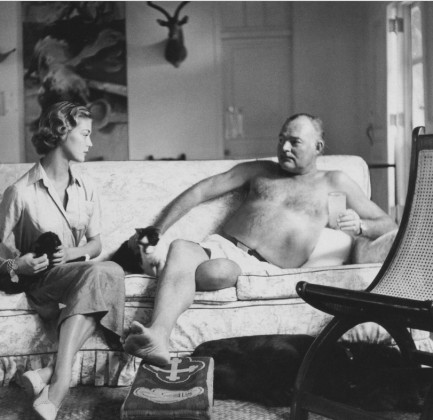 Fashion model Jean Patchett and author Ernest Hemingway, who habitually went shirtless, lounge at Finca Vigia, his house in Cuba, 1950. Fashion model Jean Patchett and author Ernest Hemingway, who habitually went shirtless, lounge at Finca Vigia, his house in Cuba, 1950.
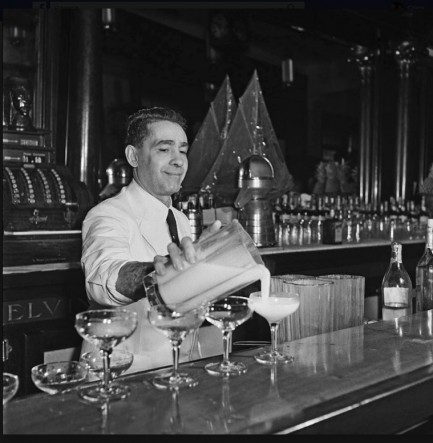 Above, Constantino Ribalaigua Vert, the "Cocktail King of Havana," inventor of the Papa Doble daiquiri, and owner of the famed bar La Floridita. Above, Constantino Ribalaigua Vert, the "Cocktail King of Havana," inventor of the Papa Doble daiquiri, and owner of the famed bar La Floridita.
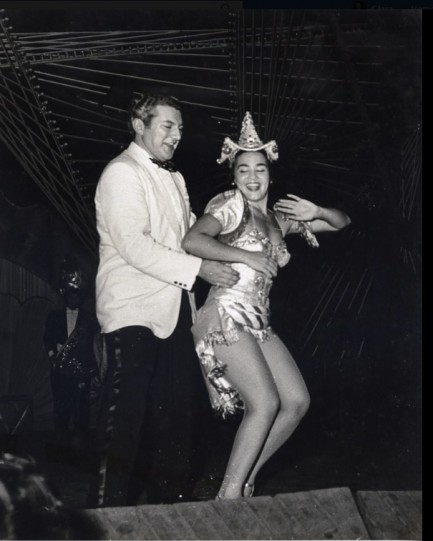 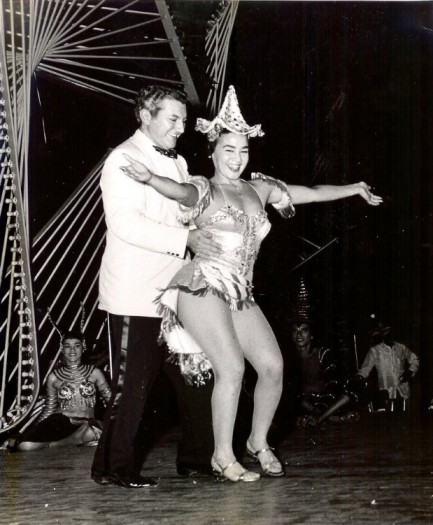 Liberace performs on stage at the Tropicana with headline dancer Ana Gloria Varona, 1954. Liberace performs on stage at the Tropicana with headline dancer Ana Gloria Varona, 1954.
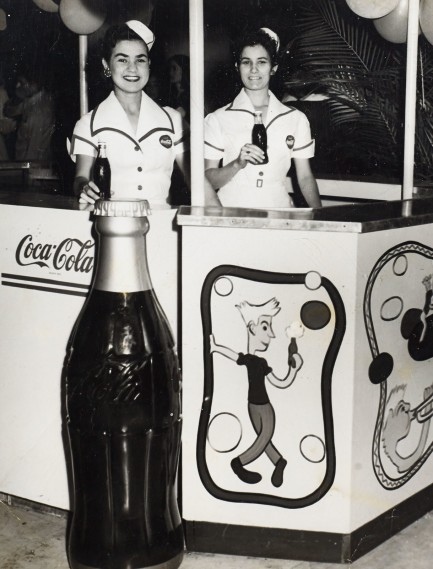 A Coke and a smile from two soft drink vendors. A Coke and a smile from two soft drink vendors.
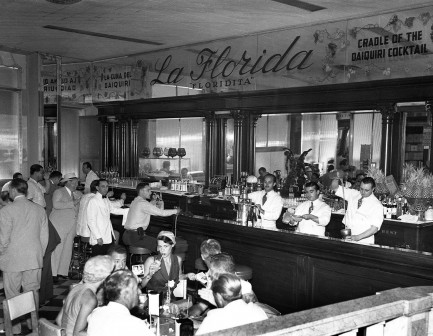 Patrons enjoy drinks at La Floridita, 1955. Patrons enjoy drinks at La Floridita, 1955.
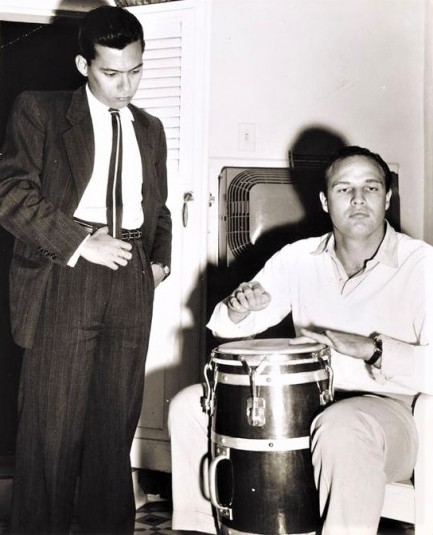 Cuban writer Guillermo Cabrera Infante stands by while Marlon Brando tries his hand—or both of them—at the conga drum at Hotel Packard, 1956. Cuban writer Guillermo Cabrera Infante stands by while Marlon Brando tries his hand—or both of them—at the conga drum at Hotel Packard, 1956.
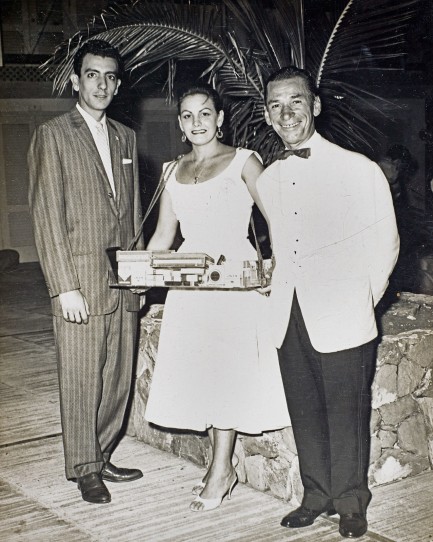 Mafia kingpin Meyer Lansky, on the right in this shot, attends the opening of the Hotel Riviera in December 1957. Mafia kingpin Meyer Lansky, on the right in this shot, attends the opening of the Hotel Riviera in December 1957.
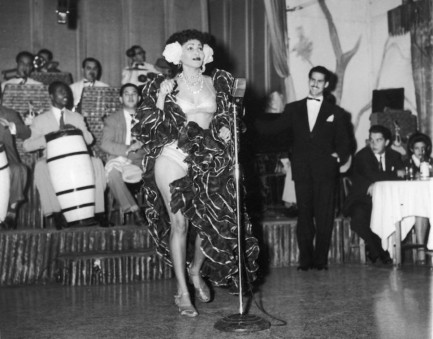 Famed entertainer Zulema dances the rhumba at the Zombie Club, 1946. Famed entertainer Zulema dances the rhumba at the Zombie Club, 1946.
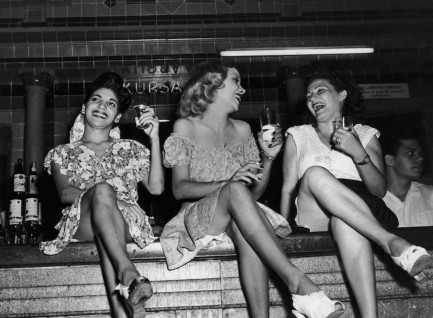 Three women liven up the room from their perch on the bar at Cabaret Kursal. Three women liven up the room from their perch on the bar at Cabaret Kursal.
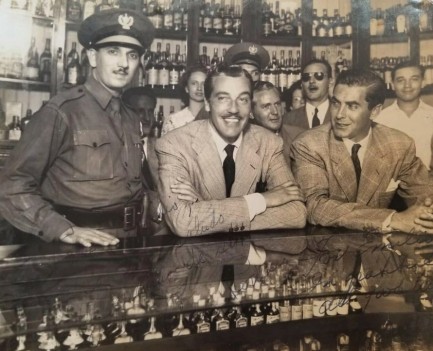 Cesar Romero and Tyrone Power enjoy a drink and a chat at Sloppy Joe's Bar. Cesar Romero and Tyrone Power enjoy a drink and a chat at Sloppy Joe's Bar.
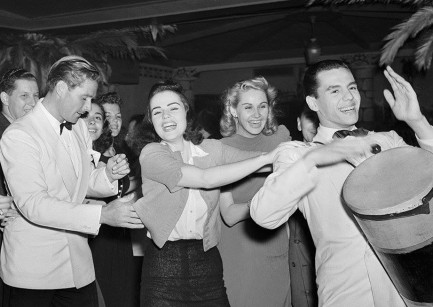 Revelers including Errol Flynn and Desi Arnaz, Jr. form a conga line during the Yoruba festival known as Dia de Babalú-Ayé. Revelers including Errol Flynn and Desi Arnaz, Jr. form a conga line during the Yoruba festival known as Dia de Babalú-Ayé.
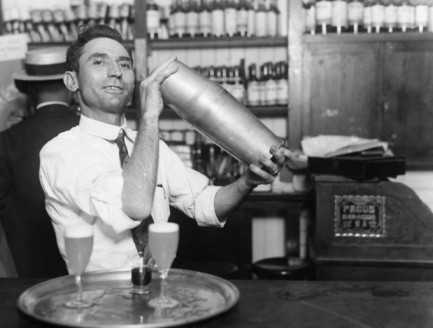 José Abeal Otero, founder of Sloppy Joe's Bar, mixes up a giant batch of liquid magic. No, this isn't the same person as above, Ribalaigua. They were both small, dapper guys. José Abeal Otero, founder of Sloppy Joe's Bar, mixes up a giant batch of liquid magic. No, this isn't the same person as above, Ribalaigua. They were both small, dapper guys.
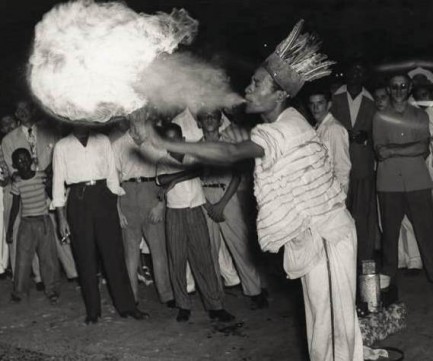 A firebreather thrills onlookers in front of the Saratoga Hotel, 1949. A firebreather thrills onlookers in front of the Saratoga Hotel, 1949.
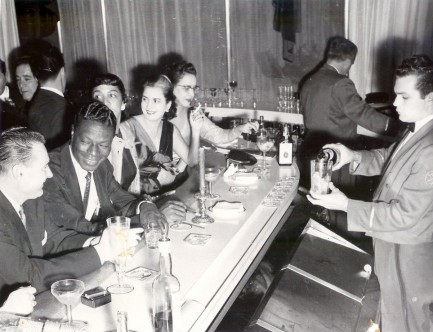 This photo shows Nat King Cole and his wife Maria Cole, along with Martin Fox, who was the owner of the Tropicana, accompanied by his wife Ofelia and an unknown fifth party. This photo shows Nat King Cole and his wife Maria Cole, along with Martin Fox, who was the owner of the Tropicana, accompanied by his wife Ofelia and an unknown fifth party.
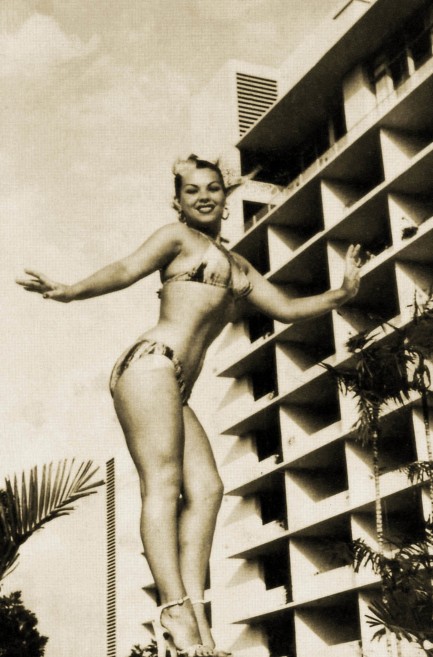 U.S. born vedette and movie star Tongolele, aka Yolanda Montes, poses outside the Capri Hotel and Casino, 1958. U.S. born vedette and movie star Tongolele, aka Yolanda Montes, poses outside the Capri Hotel and Casino, 1958.
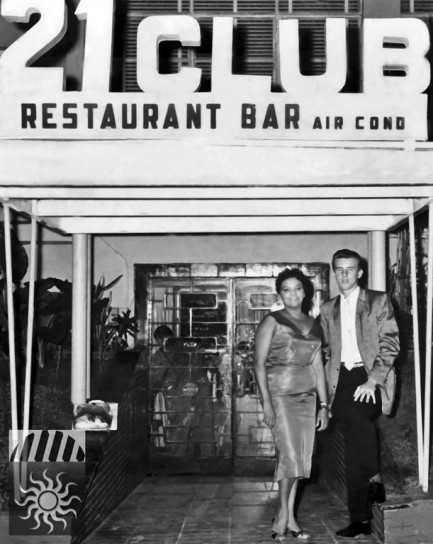 Meme Solis and Elena Burke pose at the entrance to the 21 Club, located in the Capri Hotel. Meme Solis and Elena Burke pose at the entrance to the 21 Club, located in the Capri Hotel.
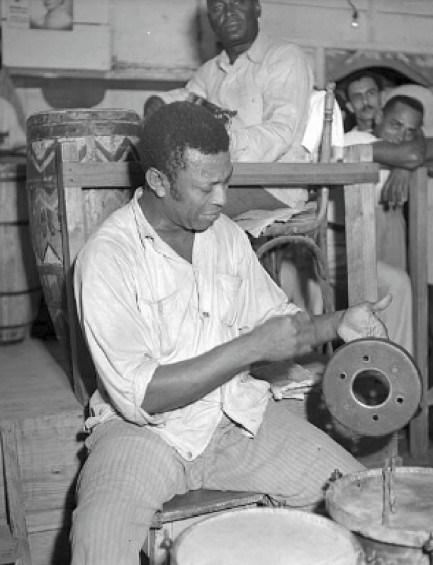 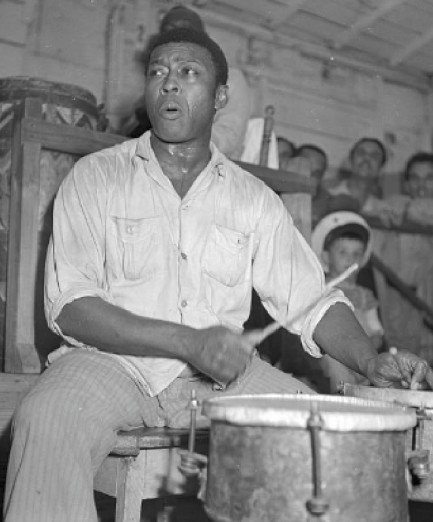 These photos show Silvano Chueg Echevarría, a master of percussion and an iconic musical personage. Let's go back to that Marlon Brando photo for a sec. Brando was an aficionado of percussive instruments. During that 1956 jaunt to Cuba he made it known that he wanted to buy drums from real percussionists. One of the musicians he met was Echevarría. All the Havana percussionists knew of Brando, of course, but thought he was a musical dilettante. At some point he finagled his way onto a nightclub stage, sat in with a band, and truly amazed onlookers with his ability on the conga. He wasn't a master, but he was pretty good. He won respect, and bought his drums. These photos show Silvano Chueg Echevarría, a master of percussion and an iconic musical personage. Let's go back to that Marlon Brando photo for a sec. Brando was an aficionado of percussive instruments. During that 1956 jaunt to Cuba he made it known that he wanted to buy drums from real percussionists. One of the musicians he met was Echevarría. All the Havana percussionists knew of Brando, of course, but thought he was a musical dilettante. At some point he finagled his way onto a nightclub stage, sat in with a band, and truly amazed onlookers with his ability on the conga. He wasn't a master, but he was pretty good. He won respect, and bought his drums.
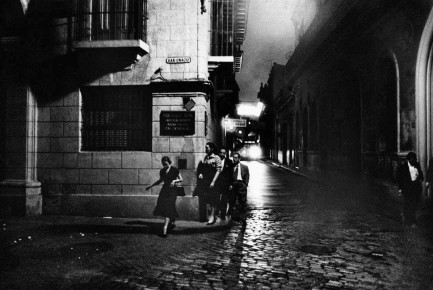 Raquel Revuelta, Manuel Corrales, and Mariano Rodriguez leave the famed bar Bodeguita del Medio and walk through the Havana night to other locales, other adventures, 1958. Raquel Revuelta, Manuel Corrales, and Mariano Rodriguez leave the famed bar Bodeguita del Medio and walk through the Havana night to other locales, other adventures, 1958.
 Kenneth Anger explores Hollywood's darkest recesses in his landmark tell-all. 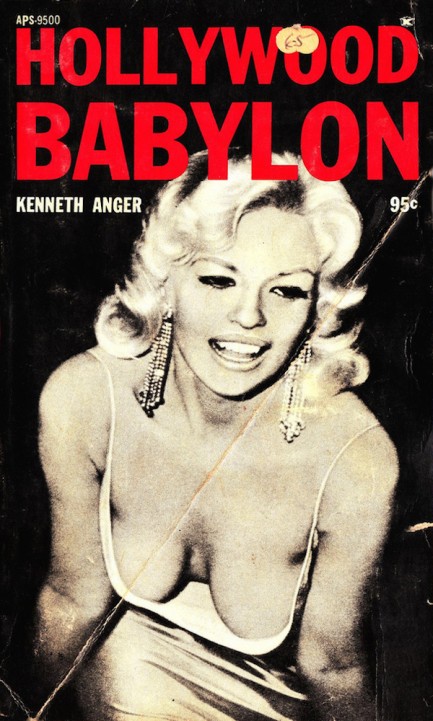
Kenneth Anger's Hollywood Babylon is the grandaddy of all Tinseltown exposés. It was published in 1965, banned ten days later, and shelved until 1975. It's exactly as advertised, outing everybody that was anybody for everything. Entire chunks are devoted to Charlie Chaplain, Lana Turner, Errol Flynn, Fatty Arbuckle and other cinematic luminaries. Some of its claims have been proved false—for instance the assertion that Lupe Velez died with her head in a toilet, and that Clara Bow screwed the USC football team (we doubt anyone really believed that one, even back then). But other tales are basically true, including accounts of various legal run-ins and feuds. Anger's writing is uneven, but at its most effective mirrors the type of pure tabloid style that influenced the likes of James Ellroy and others. Besides the salacious gossip the book has a ton of rare celeb photos, and those are of real worth. We've uploaded a bunch below. They came from a digital edition because our little paperback was too fragile to get on a scanner. By the way, don't feel as if we're working overtime on our website this Christmas morning—we uploaded everything in advance and are actually nowhere near a computer today. We're glad you took a minute to drop by. Copious vintage Hollywood below. 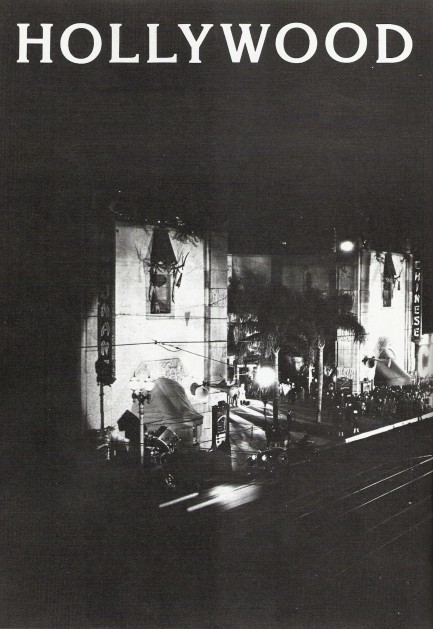 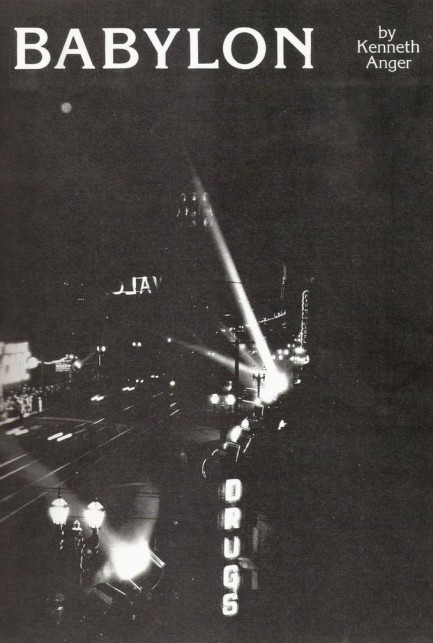 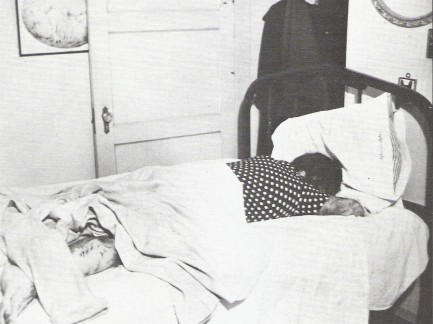 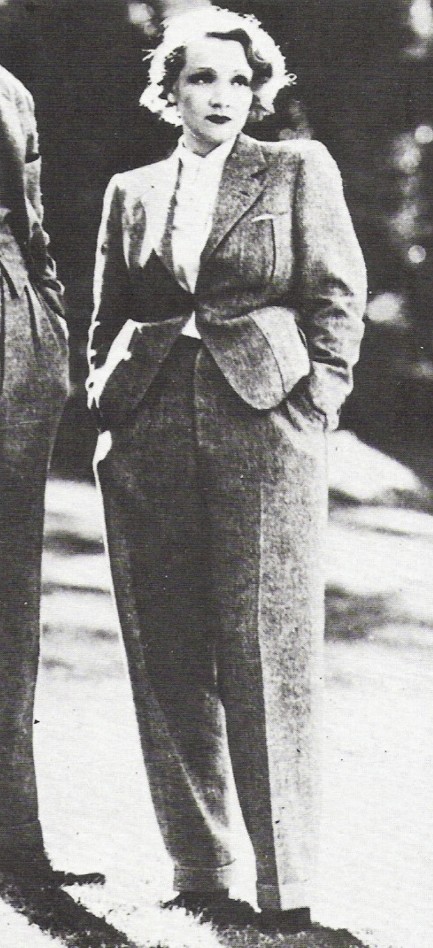 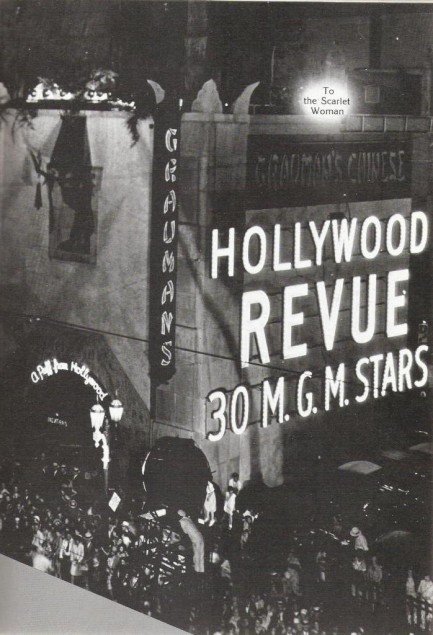 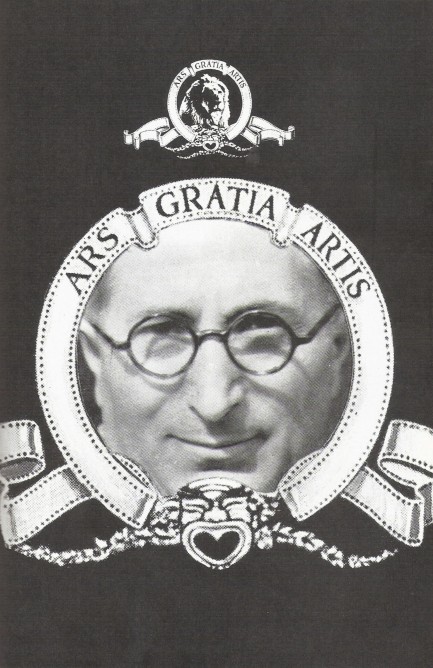 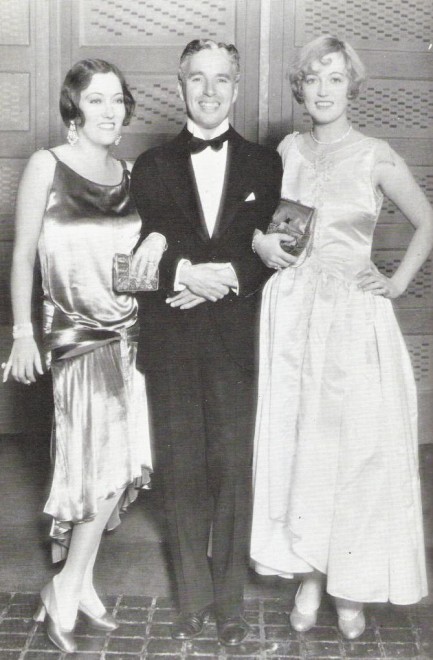 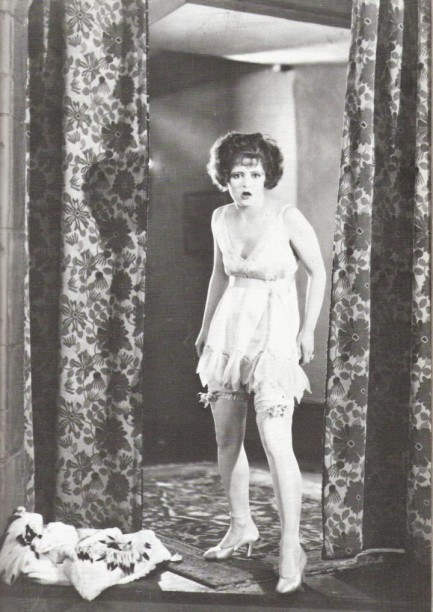 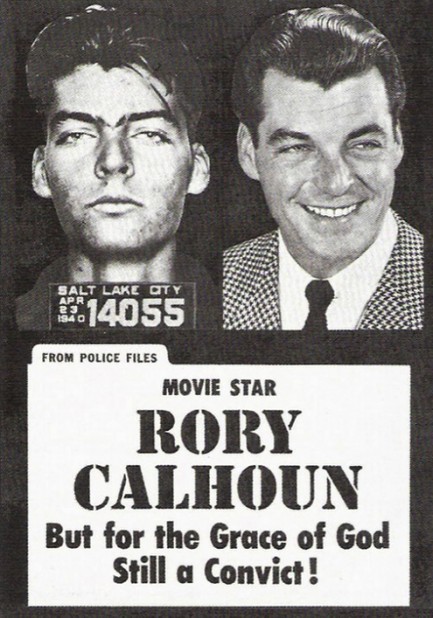 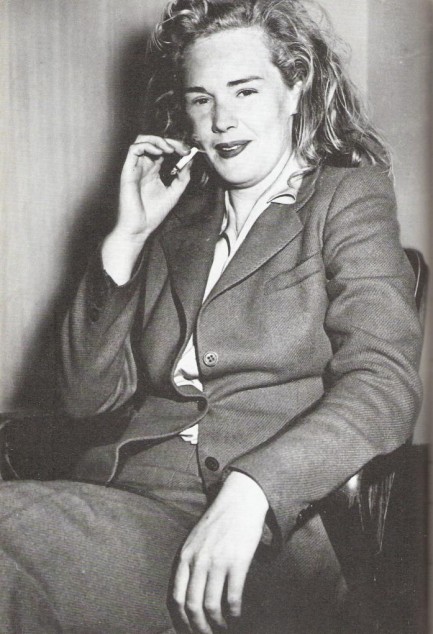 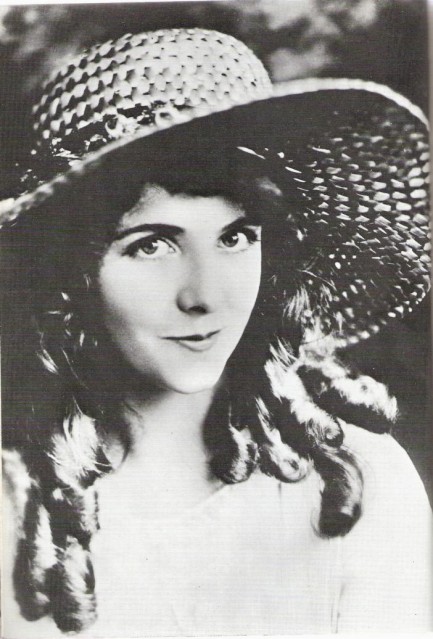 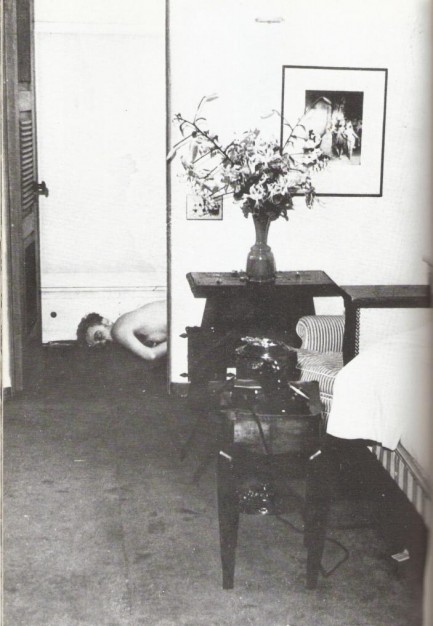 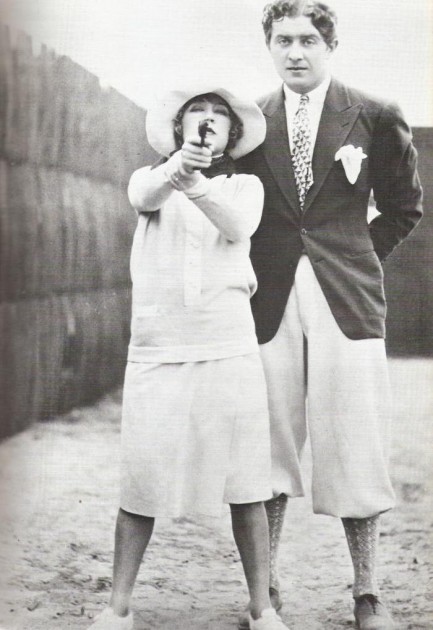 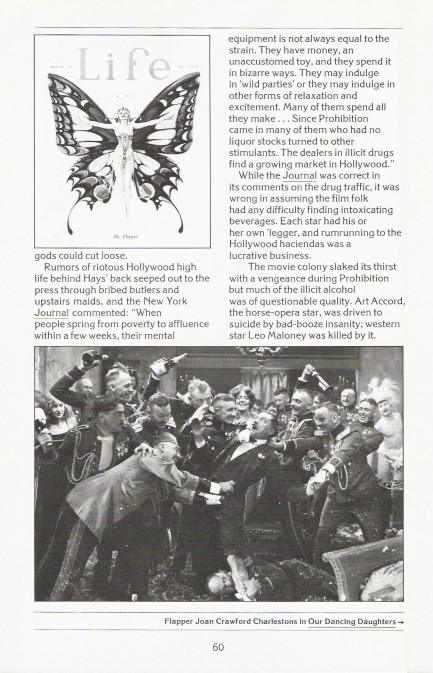 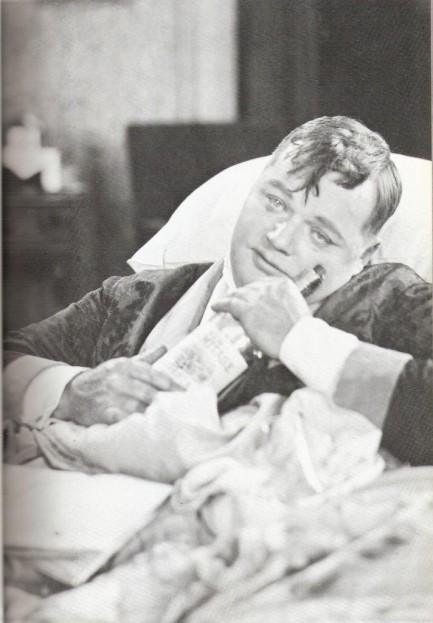 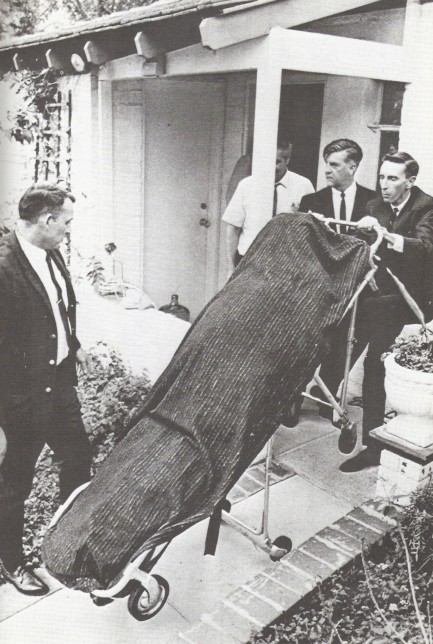 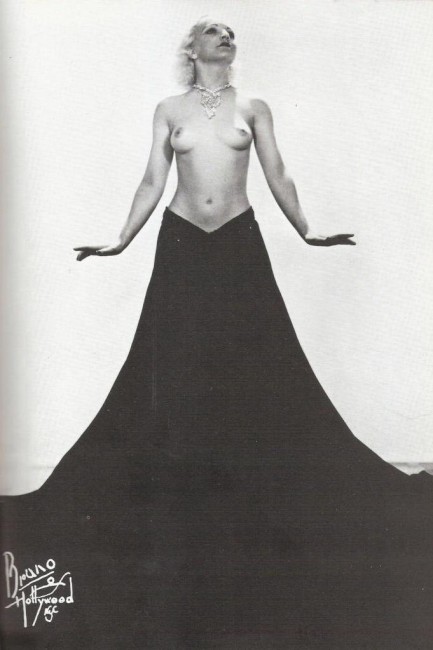 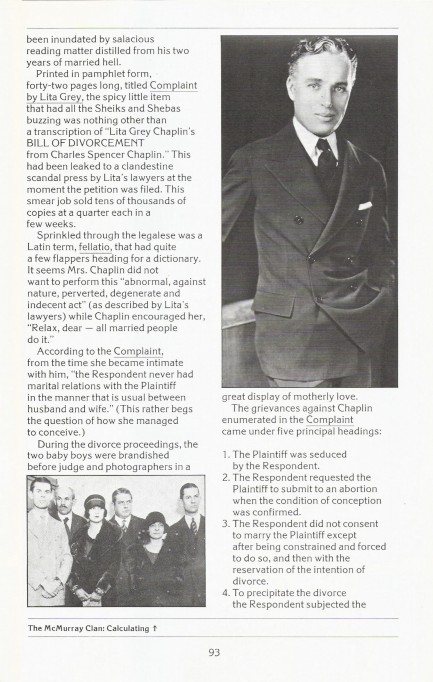 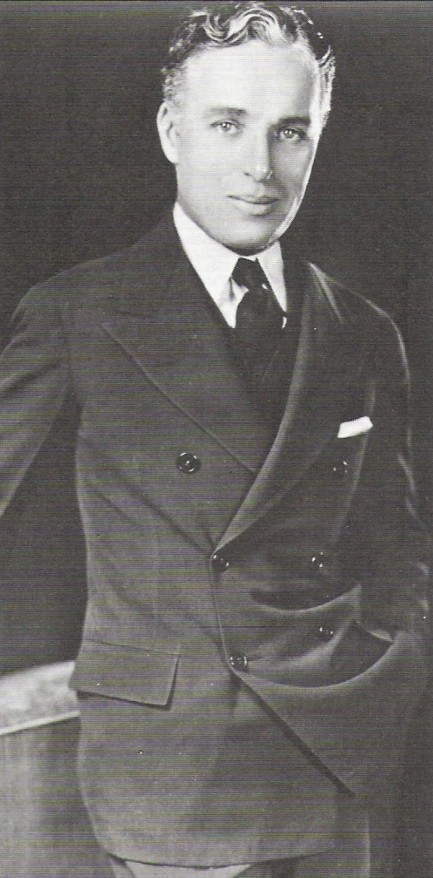 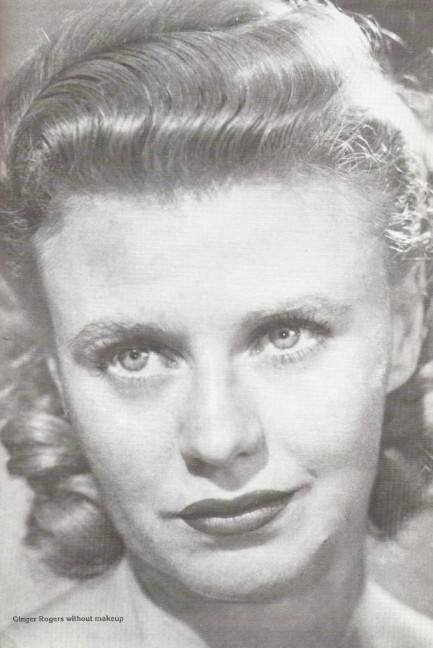 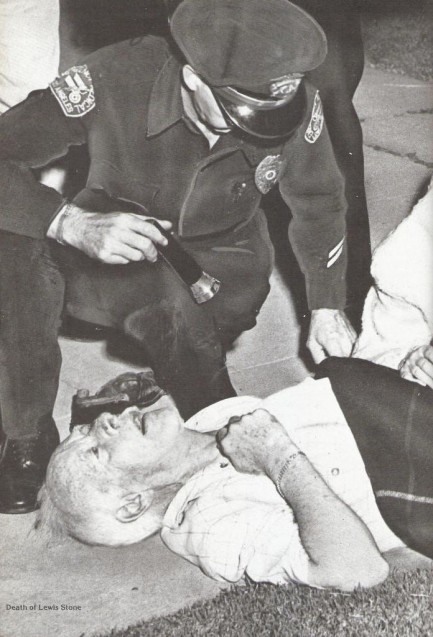 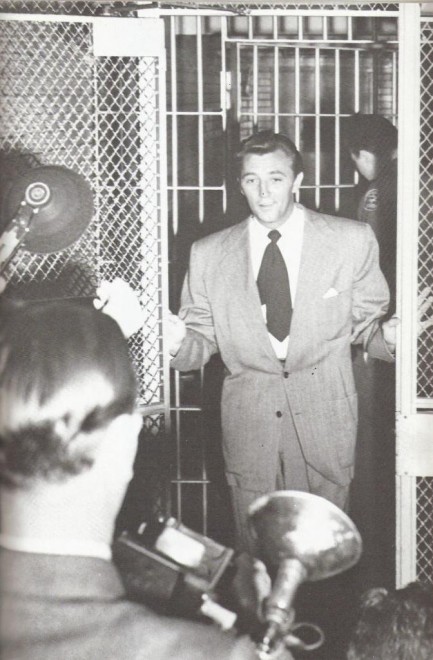 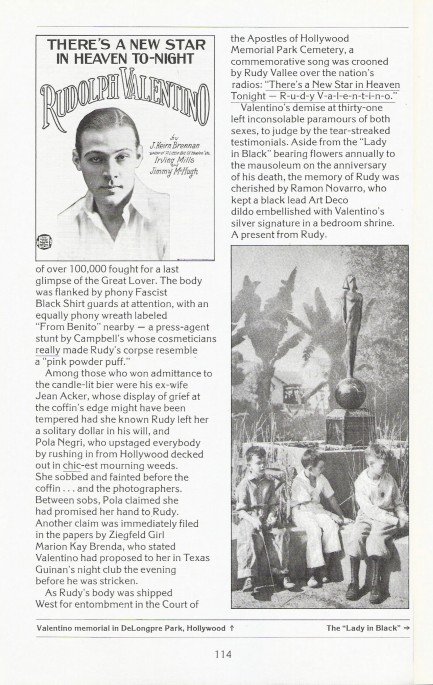 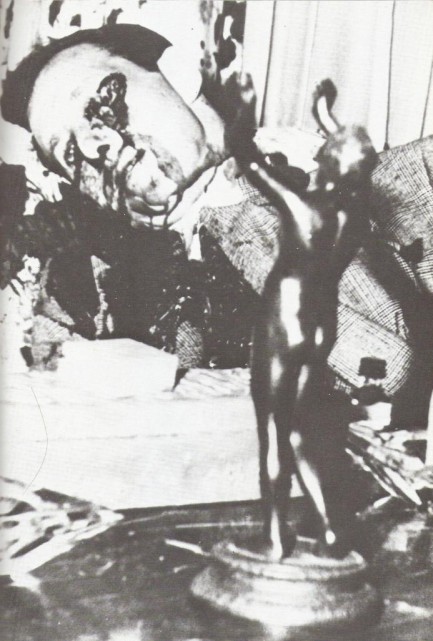 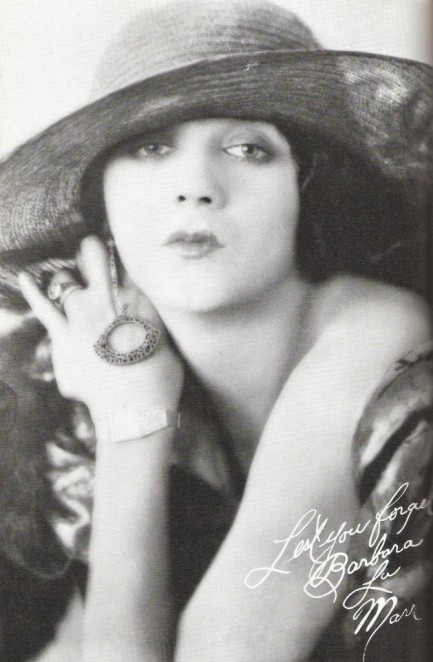 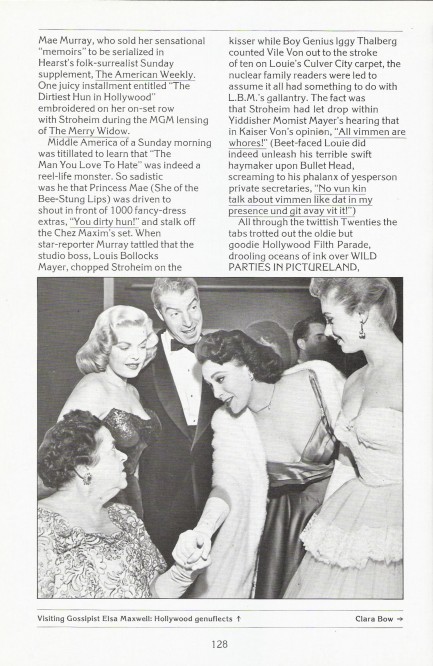 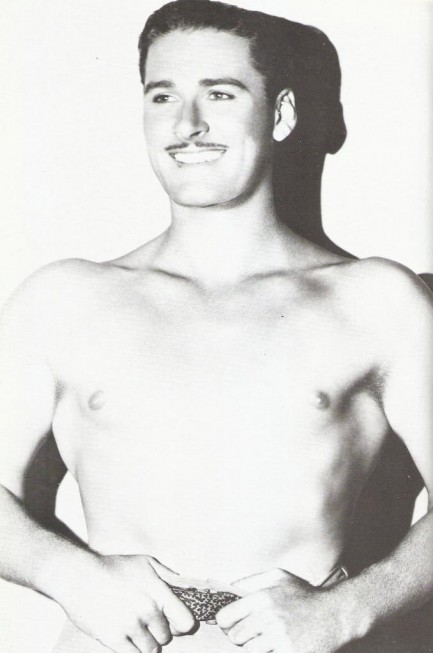 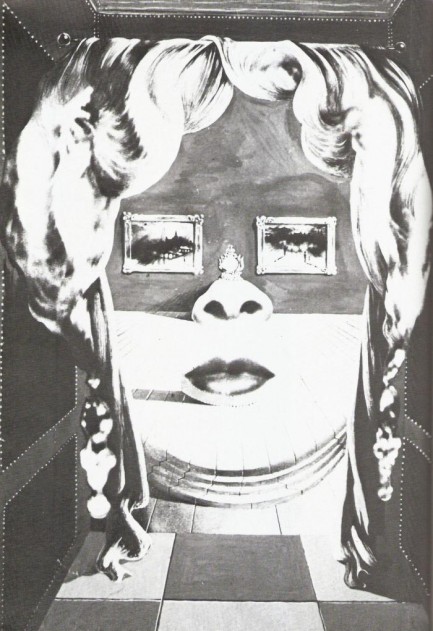 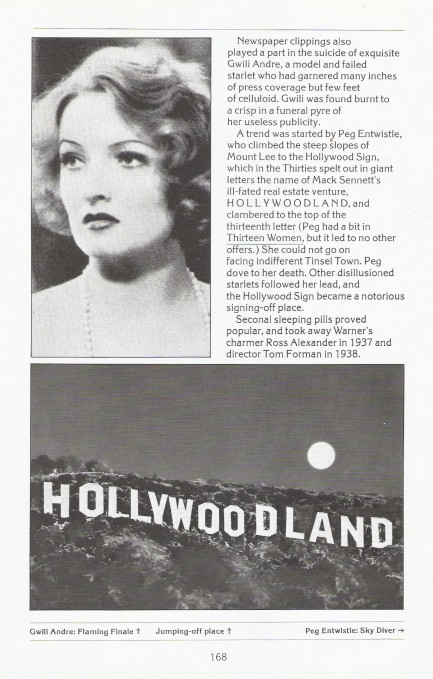 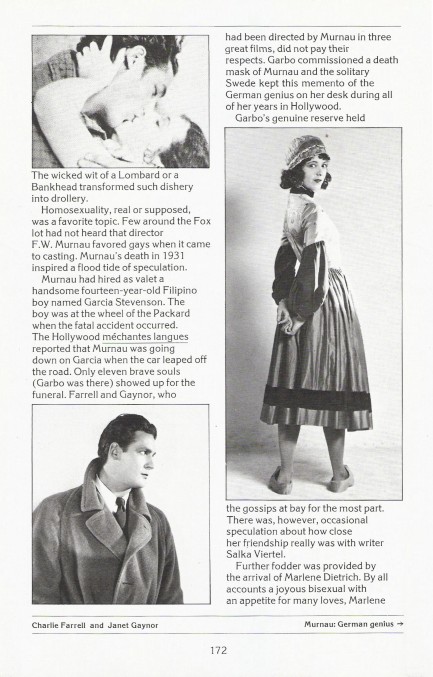 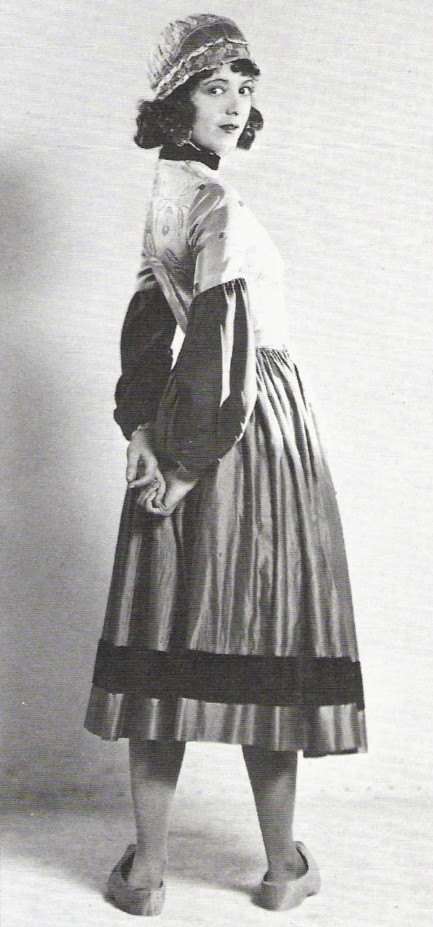 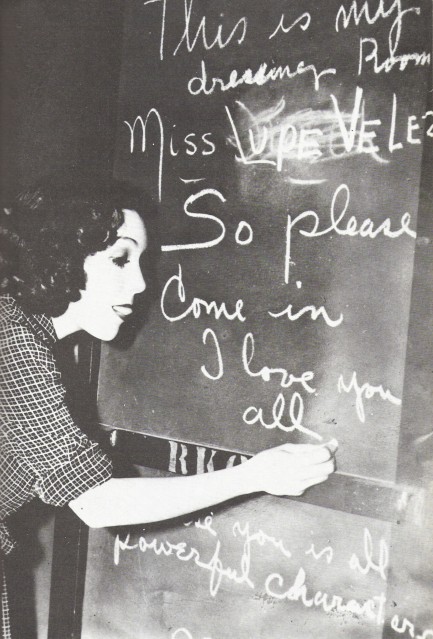 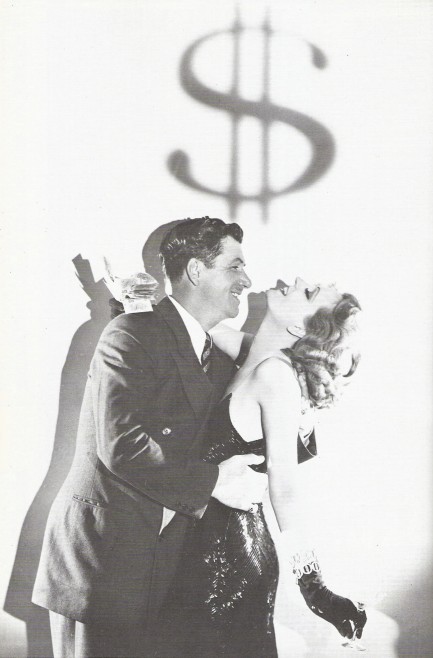 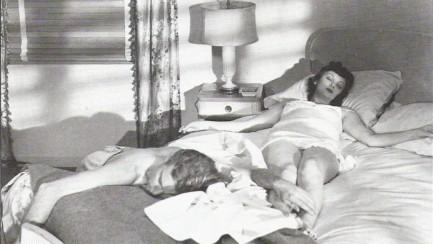 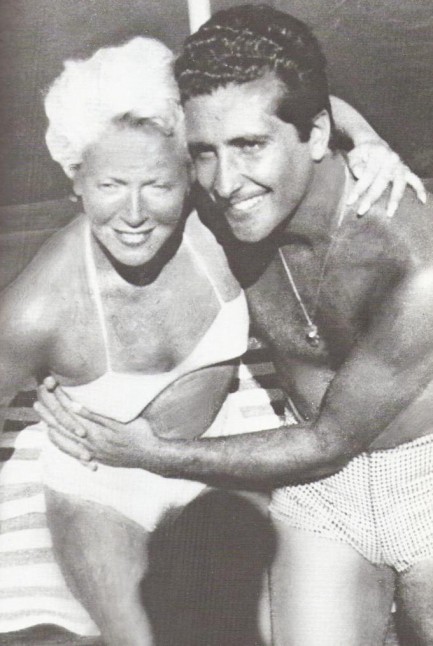 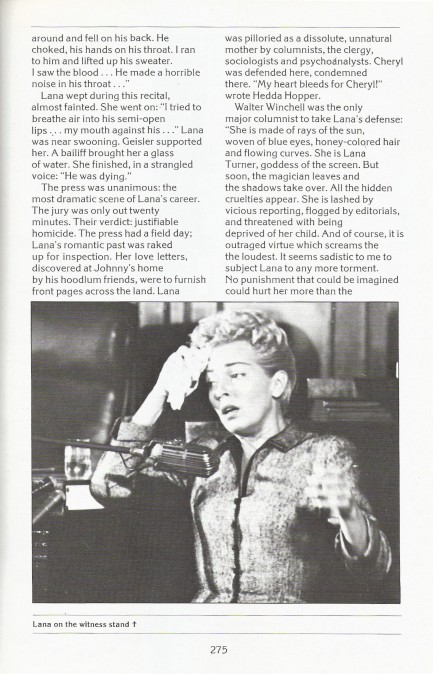 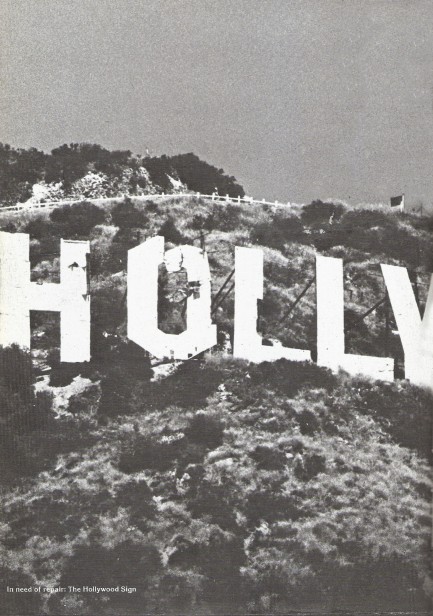 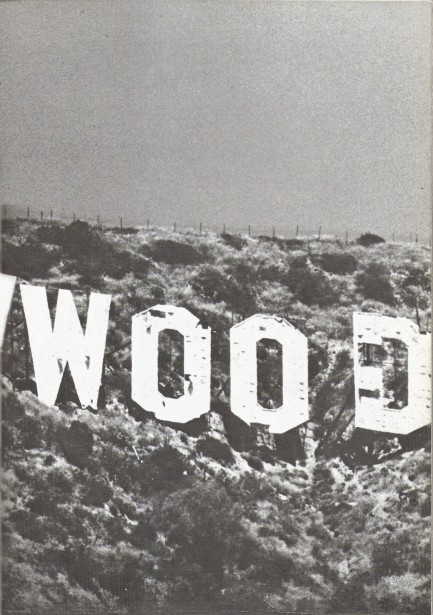
 New tabloid serves up Russell, Monroe, and others. 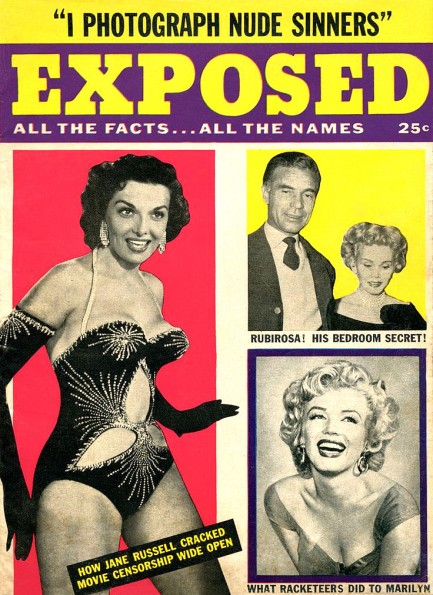
Jane Russell, wedged into an outfit that turns her boobs into footballs, graces the cover of the debut issue of Exposed, a high budget tabloid launched by Fawcett Publications in 1955. It arrived on a crowded newsstand already occupied by Confidential—then arguably the most circulated magazine in the U.S.—as well as Whisper, Hush-Hush, Uncensored, and similar publications. The get-up Russell is wearing is a costume from her starring role in 1954's The French Line, and we sort of assumed the shot had been at least slightly doctored,  and we seem to be correct. Judge for yourself at right. At least her boob punishment was offset by the fact that her outfit was too flimsy to include one of the deadly corsets that sometimes made their way around stars' waists. and we seem to be correct. Judge for yourself at right. At least her boob punishment was offset by the fact that her outfit was too flimsy to include one of the deadly corsets that sometimes made their way around stars' waists. Russell is in Exposed to illustrate a story about sex in cinema, but she isn't the most exposed occupant of the magazine. That would be Marilyn Monroe, whose famous Playboy nude is reprinted for a story about hustlers reprinting her photos. We'll just assume Exposed licensed their Monroe shot. Apparently, though, those other miscreants were selling her likeness by the thousands without permission and without compensating Monroe. Exposed shows her in court testifying for prosecutors. The prosecution may have won its case in 1955, but in the here and now Monroe is sold from Tegucigalpa to Manila, unlicensed all of it. Which just goes to show the more things change the more they stay the same. Probably the highlight of the issue is a long story about detectives who make their living catching cheating couples in action. Exposed offers up numerous photos of these pairs caught in the act in motel rooms and secluded homes. Are these photos real? Well, we have our doubts. Even the most cleverly posed action shots have those intangibles that mark them as fakes, but that's just our opinion. Judge for yourself. Elsewhere in Exposed you get “Sophie” Loren, Errol Flynn, Marguerite Chapman, Franchot Tone, and other big time celebs. We're pretty proud of this acquisition. It wasn't terribly expensive, but we've seen it priced much higher than what we paid. Maybe down the line we'll flip ours for a tidy profit. But that's what we always say. Much to the Pulp Intl. girlfriends' chagrin, our office just piles higher and higher with mid-century ephemera and we haven't sold a single piece yet. Exposed goes to the top of the precariously tottering pyramid. We have about thirty-five scans below, and plenty more tabloids on the way.
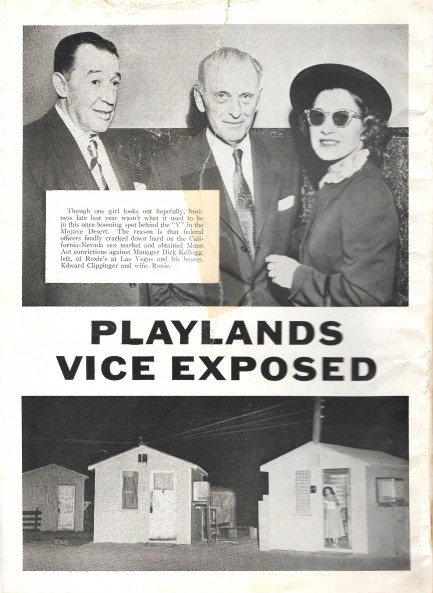 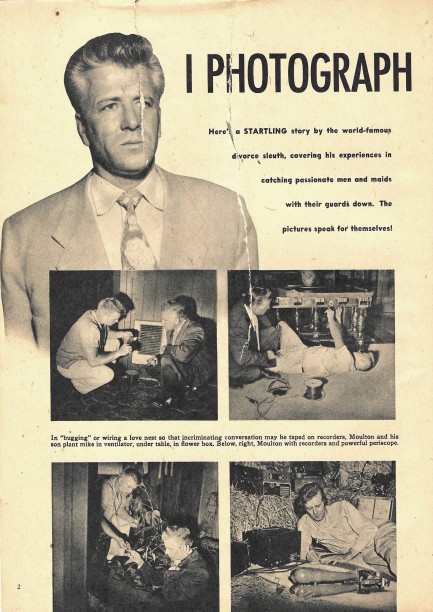 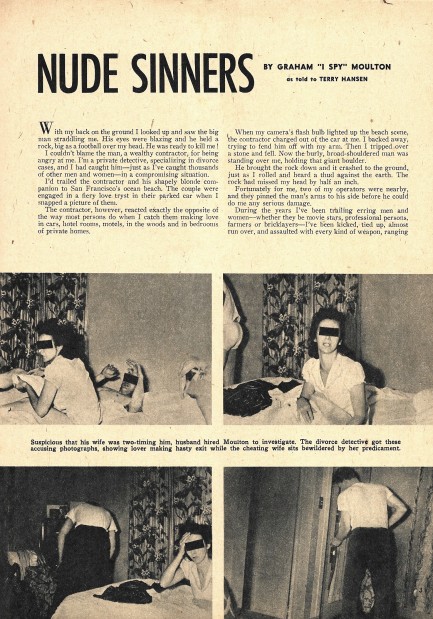 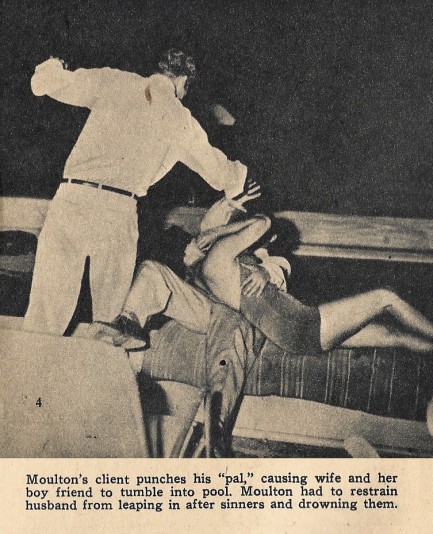 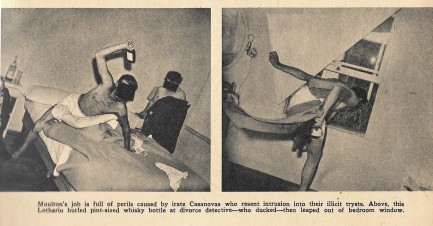 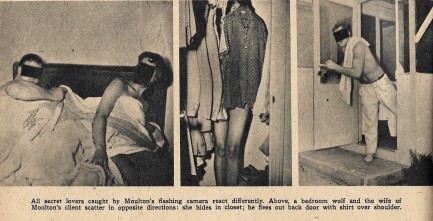 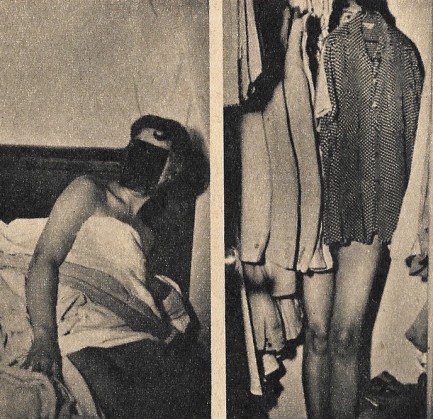 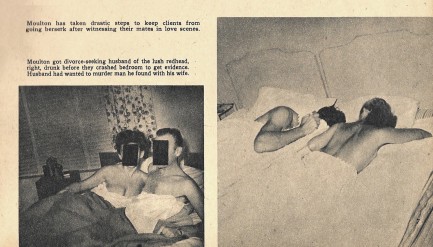 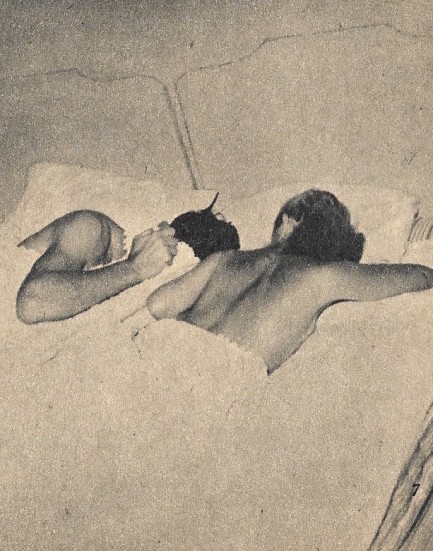 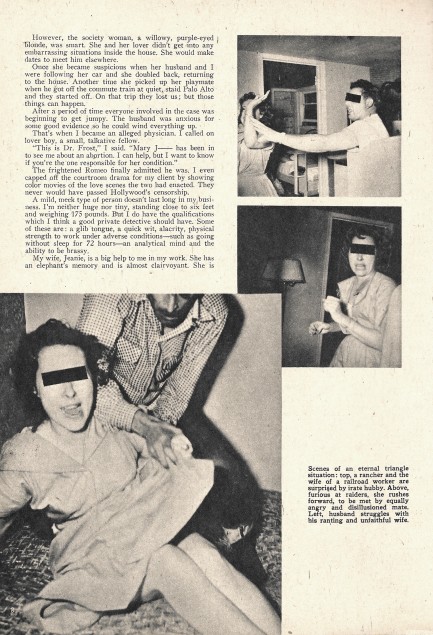 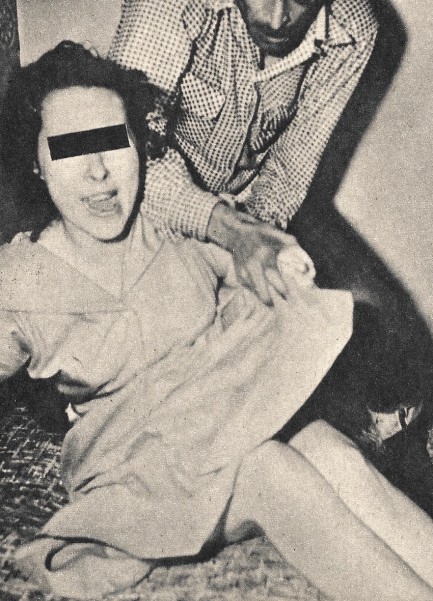 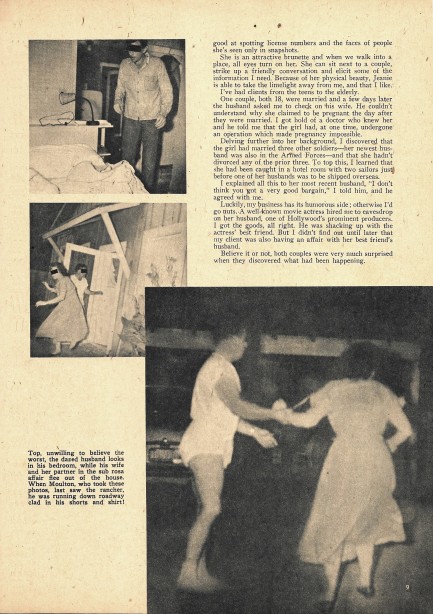 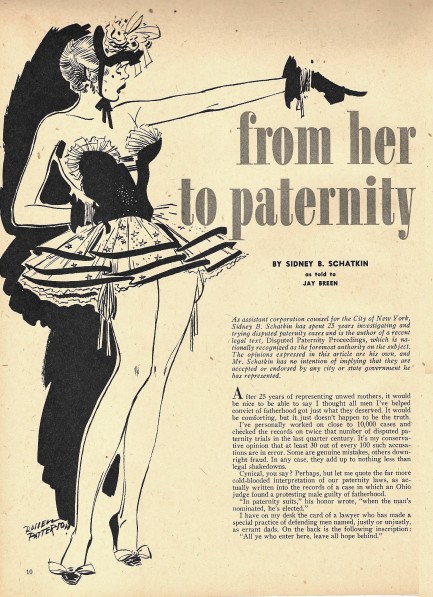 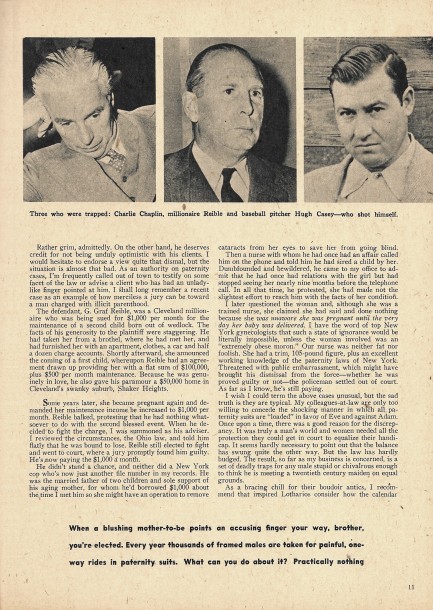 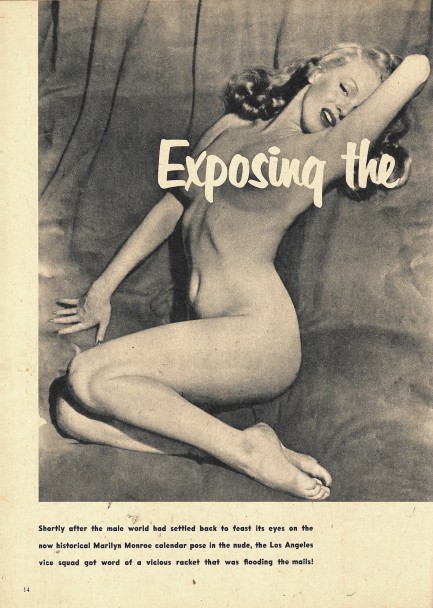 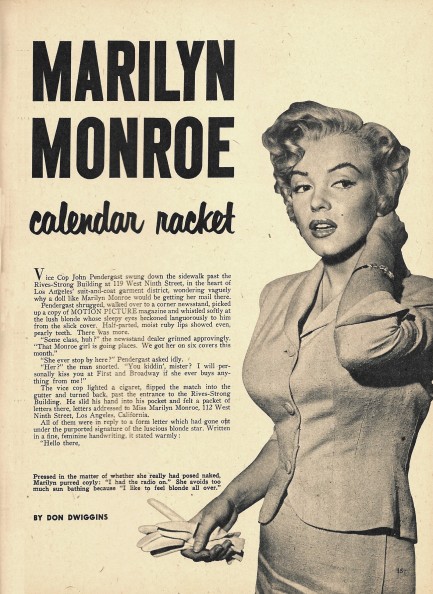 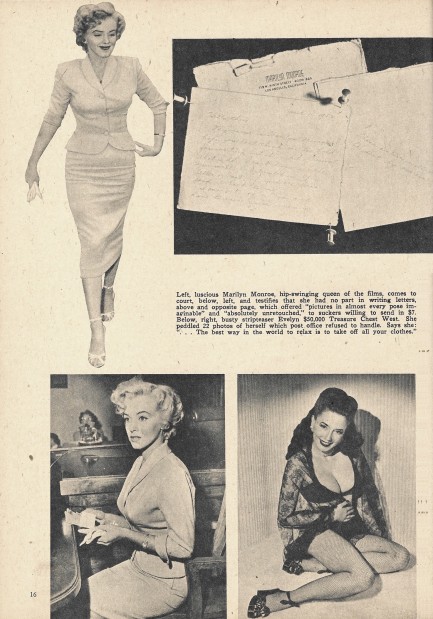 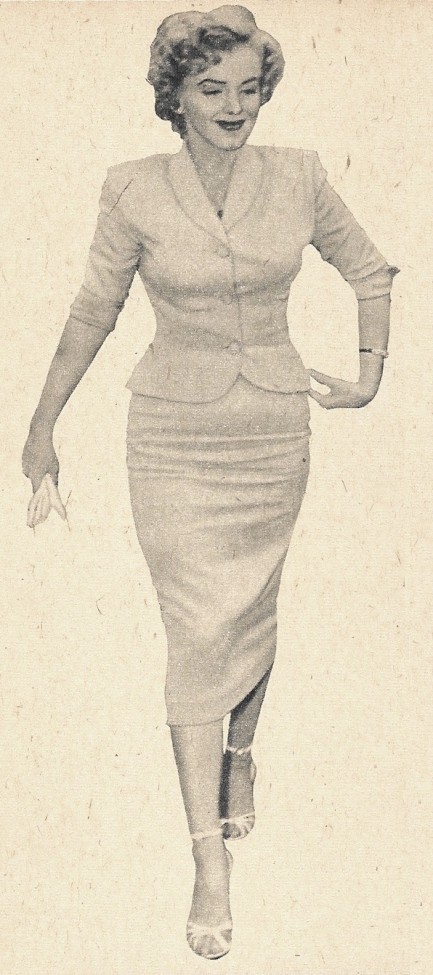 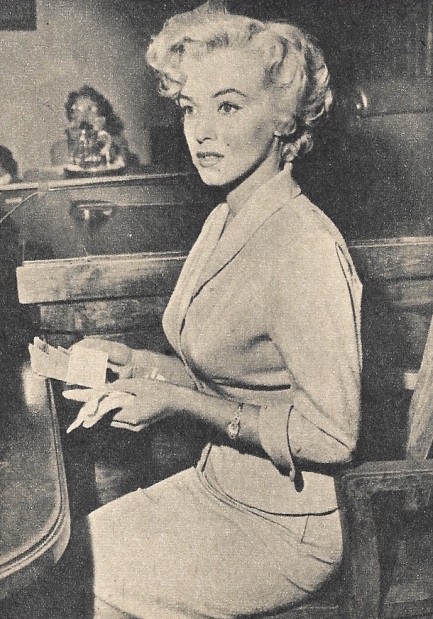 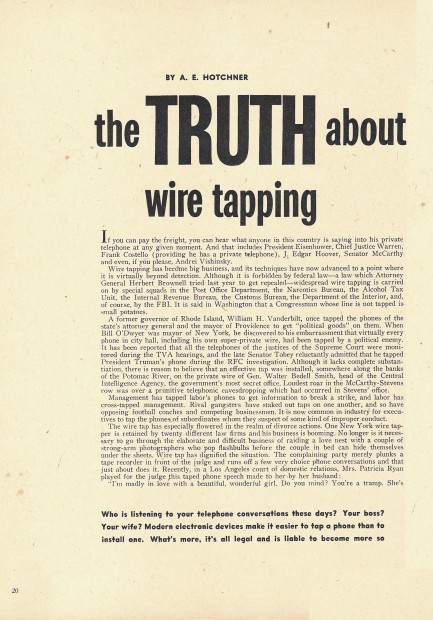 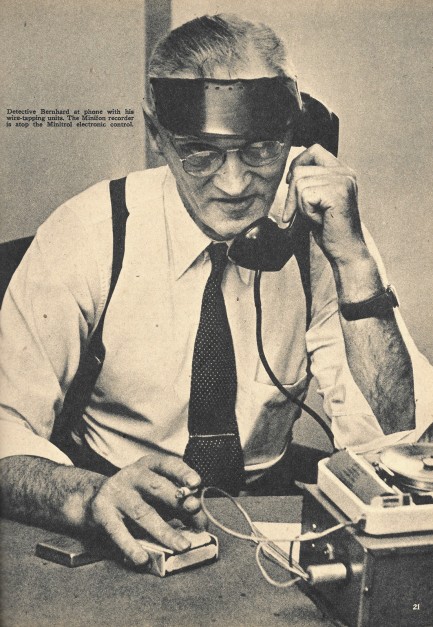 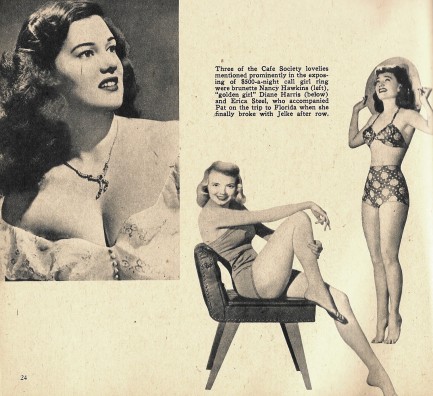 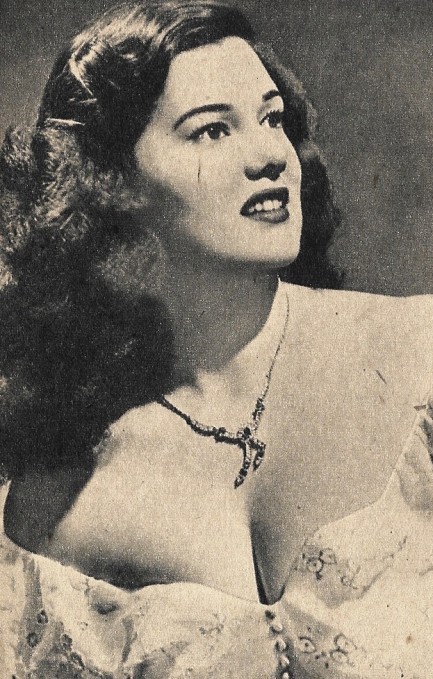 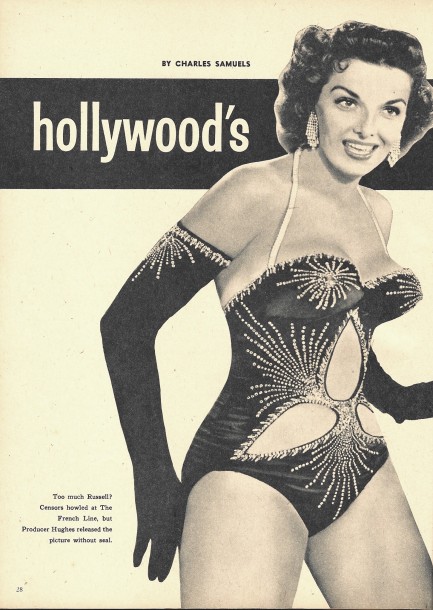 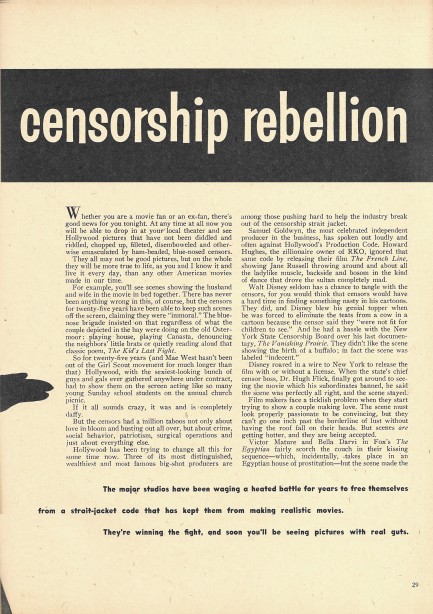 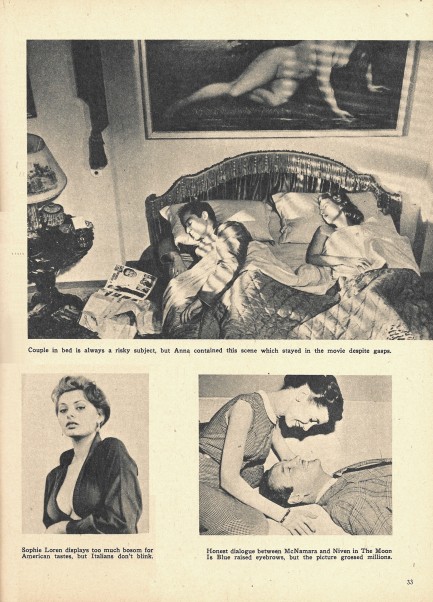 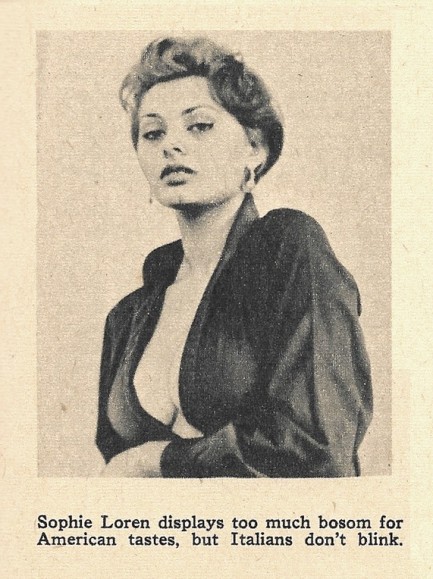 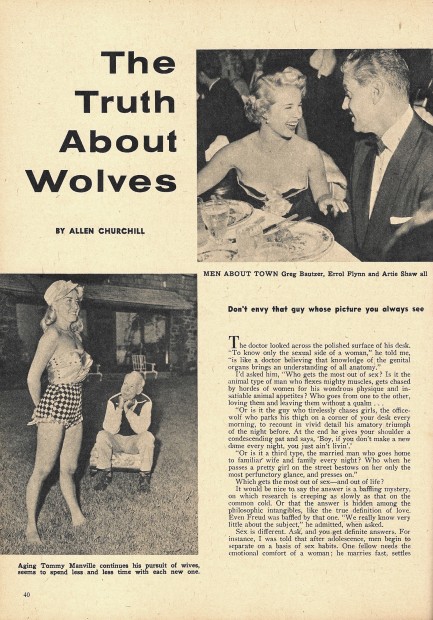 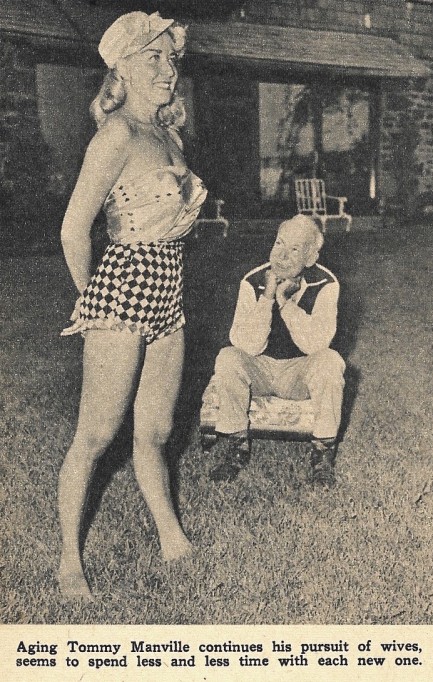 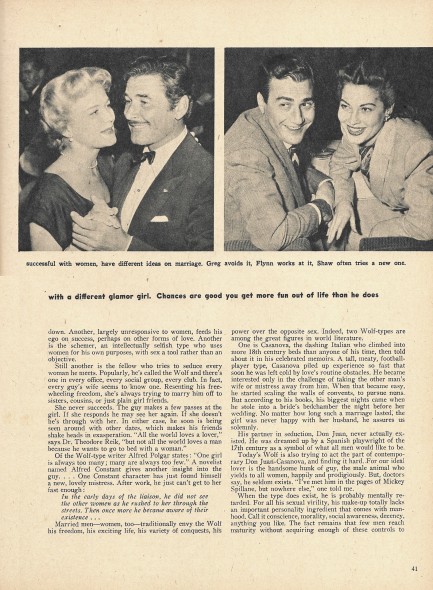 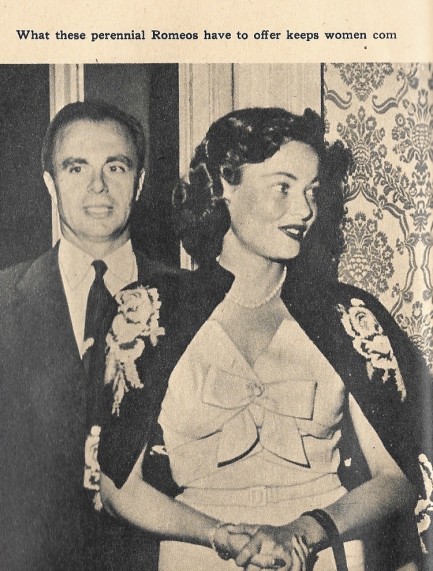 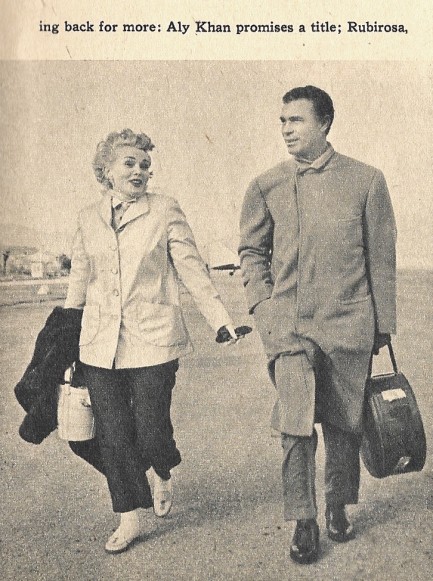 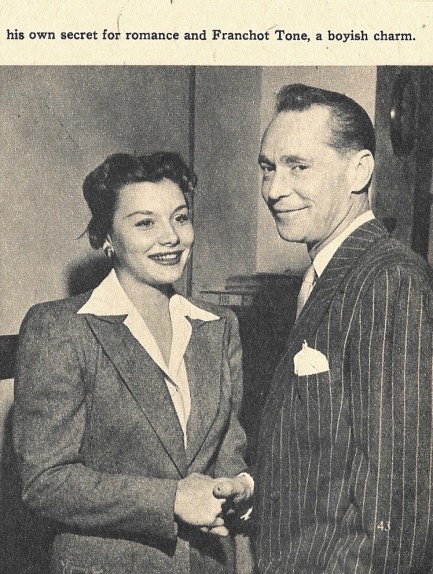 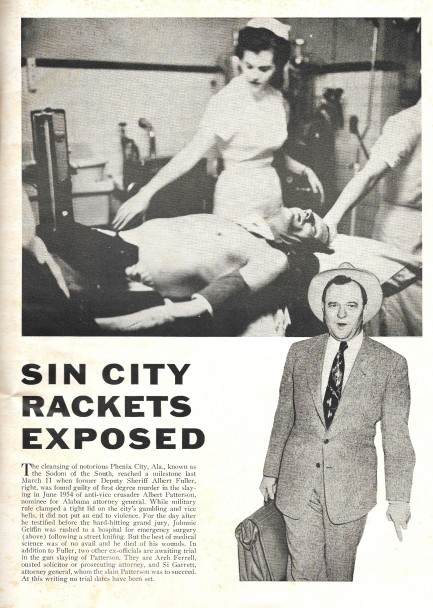
 New tabloid explodes onto the gossip scene. 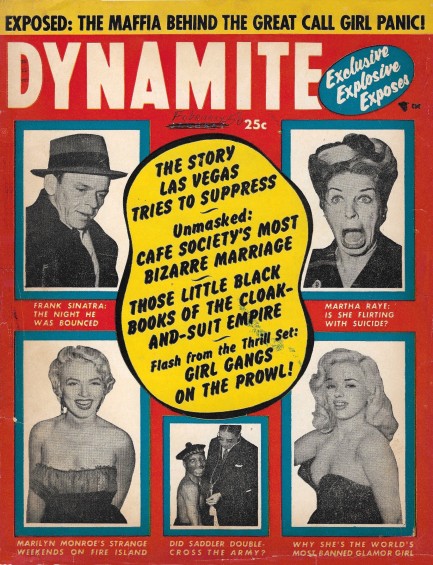
When we describe Dynamite as a new tabloid, it's only partly true. It was a new imprint. But its publisher, the Modern Living Council of Connecticut, Inc., was headquartered at the Charlton Building in Derby, Connecticut, which is where Top Secret and Hush-Hush based operations. When you see that Dynamite carried the same cover font as Top Secret and Hush-Hush, and that those two magazines advertised in Dynamite, it seems clear that all three had the same provenance. But unlike Top Secret and Hush-Hush, it doesn't seem as if Dynamite lasted long. The issue above, which appeared this month in 1956, is the second. We are unable to confirm whether there was a third. But if Dynamite was short-lived it wasn't because of any deficiencies in the publication. It's identical in style to other tabloids, and its stories are equally interesting.
One of those deals with Henry von Thyssen, the Dutch born, German descended heir to an industrial fortune, and his wife, Nina Dyer, heiress to a tea plantation in Sri Lanka, back then called Ceylon. The von Thyssen family manufactured steel in Germany, including for Hitler's Third Reich, and came out of World War II unscathed, as big companies that profit from war always do. Dyer was a dilettante famed for making bikinis popular on the French Riveria. According to Dynamite, von Thyssen was so desperate to marry Dyer that he allowed her to keep her boyfriend, the French actor Christian Marquand. Society gossips whispered,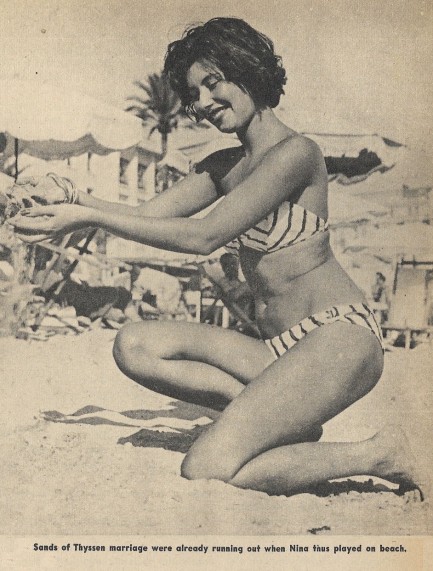 but both spouses were fine with the set-up until von Thyssen accidentally ran into Dyer and Marquand in Carrol's nightclub in Paris and was forced to save face by starting a fight. The couple soon divorced, but not because of infidelity, as many accounts claim. What finally broke the couple up was that Dyer dropped Marquand. Dynamite tells readers: “[von Thyssen] has ditched his sloe-eyed Baroness because now she's decided she loves him.” but both spouses were fine with the set-up until von Thyssen accidentally ran into Dyer and Marquand in Carrol's nightclub in Paris and was forced to save face by starting a fight. The couple soon divorced, but not because of infidelity, as many accounts claim. What finally broke the couple up was that Dyer dropped Marquand. Dynamite tells readers: “[von Thyssen] has ditched his sloe-eyed Baroness because now she's decided she loves him.”
Interesting, but there are many similar stories about open high society marriages. What interested us, really, was the portrayal of Dyer. Apparently she had at some point been strongly influenced by Asian women. Her husband described her as “soft and feminine and oriental looking.” Dynamite painted this word picture: “She walks as though she has a water pot balanced on her head, her dark, slanting eyes are inscrutable, and her movements are so languorous and cat-like that von Thyssen gave her a baby panther as a companion.” Dyer eventually had two panthers, and was often seen walking them on the Croisette in Cannes. After her marriage to von Thyssen ended she quickly married Prince Sadruddin Aga Khan, but that marriage ended in divorce. Over the years she had been given many gifts. Besides the panthers there were cars, jewels, and a Caribbean island. But the one thing money never bought for her was happiness. She committed suicide at age thirty-five.
There's a lot more to learn about Nina Dyer—her modeling career, her adventures in the south of France, her free-spirited ways in the Caribbean, her 1962 E-Type Jaguar Roadster that was found in Jamaica in 2015 and restored for a November 2016 auction, and more. So we'll be getting back to her a little later. We still have about fifty tabloids from the mid-1950s and we're betting she appears in more than a few. Meanwhile, elsewhere in Dynamite is a story tracking Marilyn Monroe's movements around Fire Island during a summer 1955 vacation, a report about Frank Sinatra being barred from the Milroy Club in London, an exposé on prostitution in Rome, a breakdown of the breakdown of Gene Tierney's engagement to Aly Khan (Sadruddin Aga Khan's brother), and a couple of beautiful photos of Diana Dors. We have about thirty scans below for your enjoyment. Odds are we'll never find another issue of Dynamite, but we're happy to own even one. It's great reading. 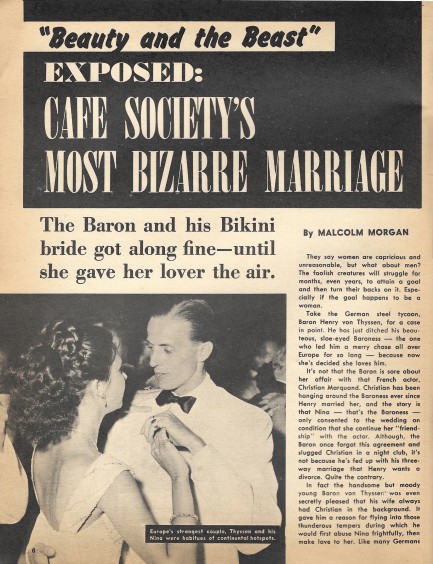 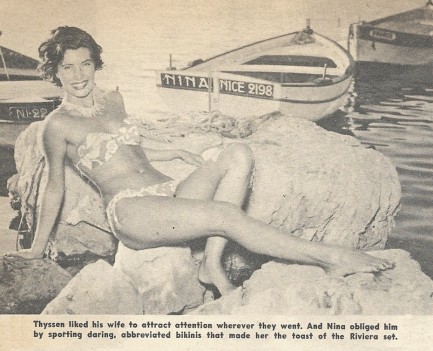 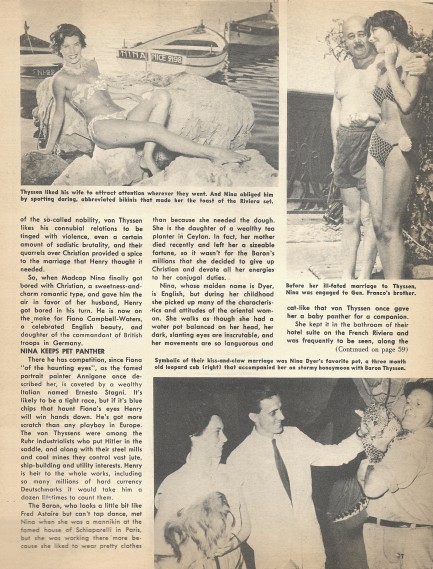 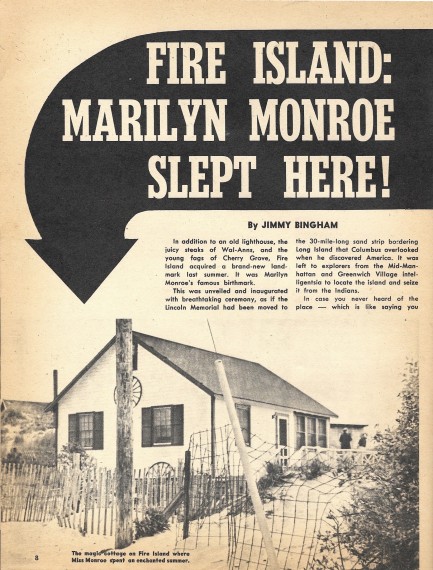 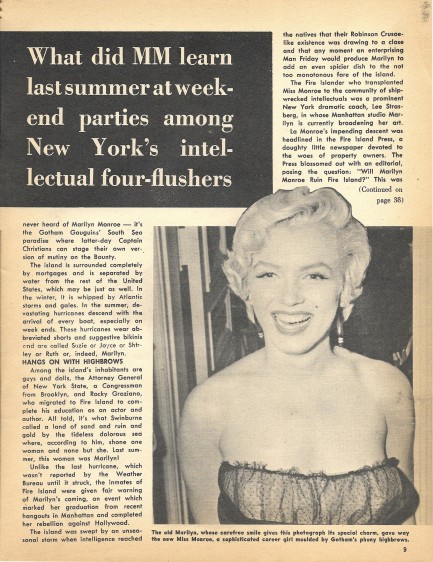 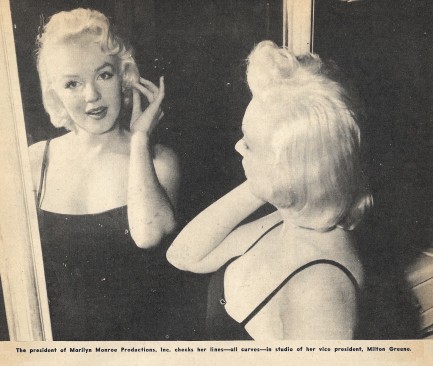 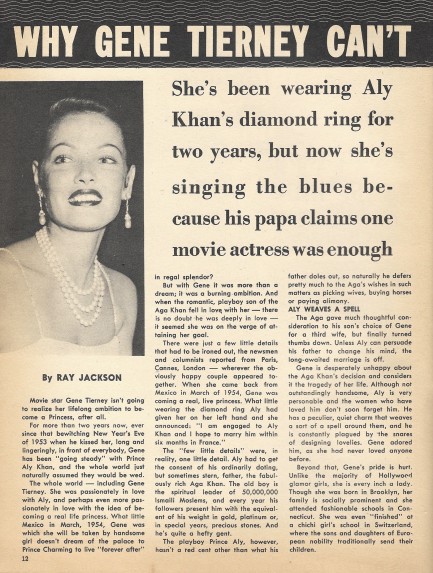 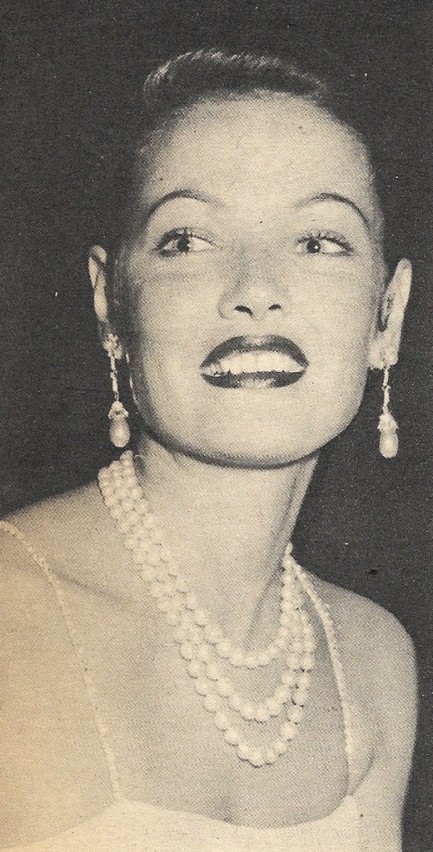 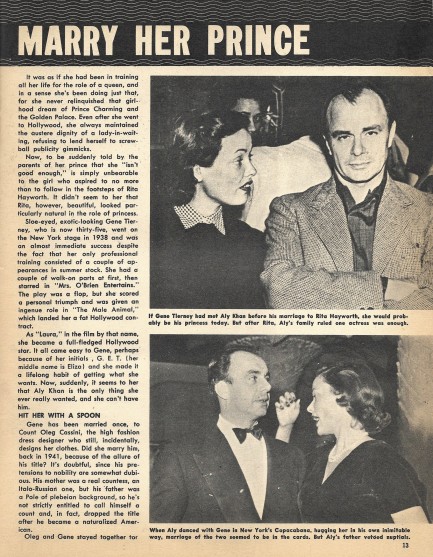 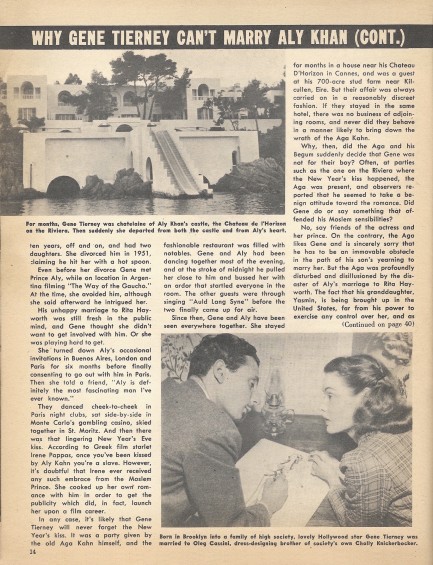 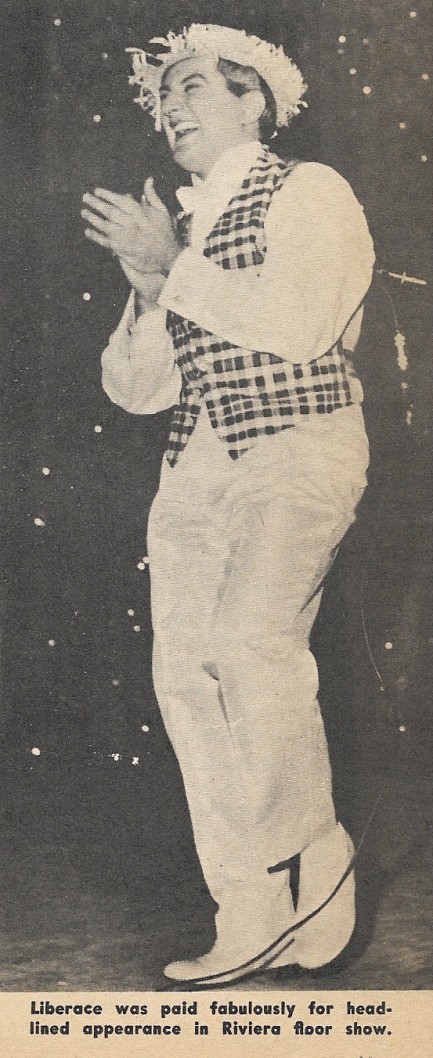 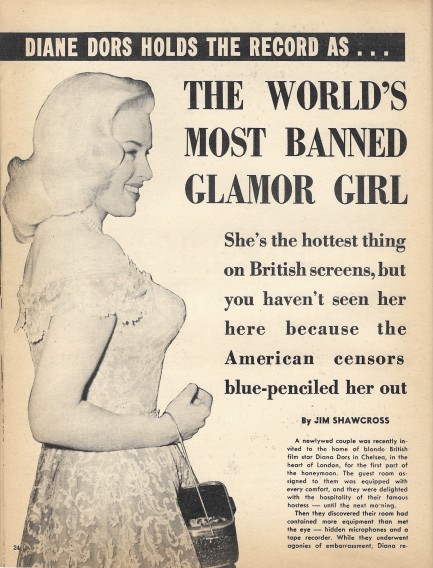 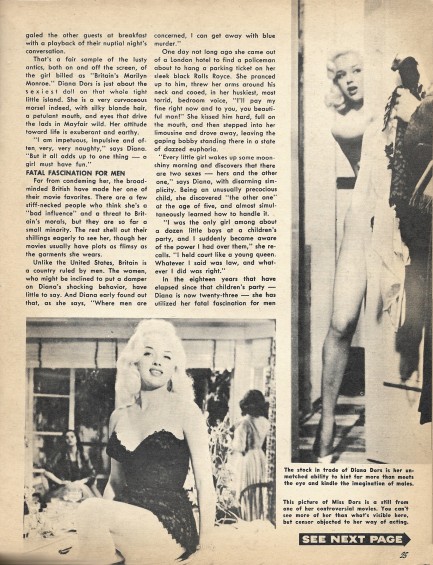  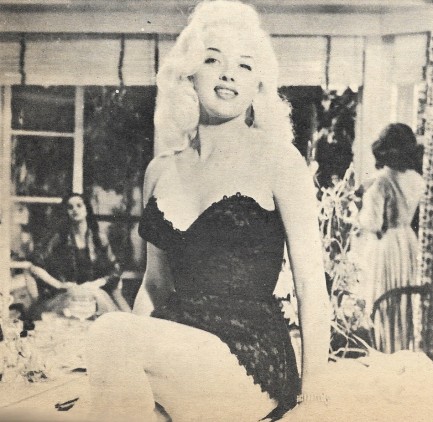 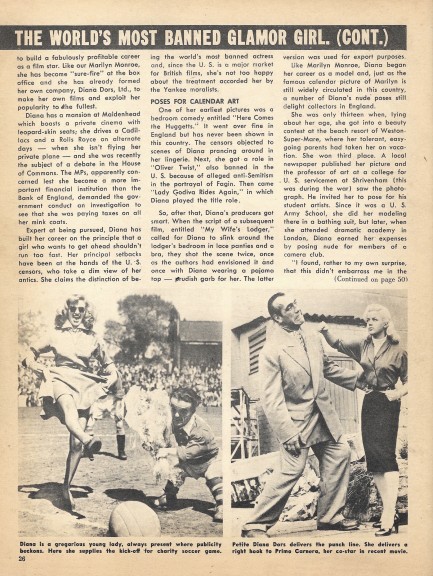 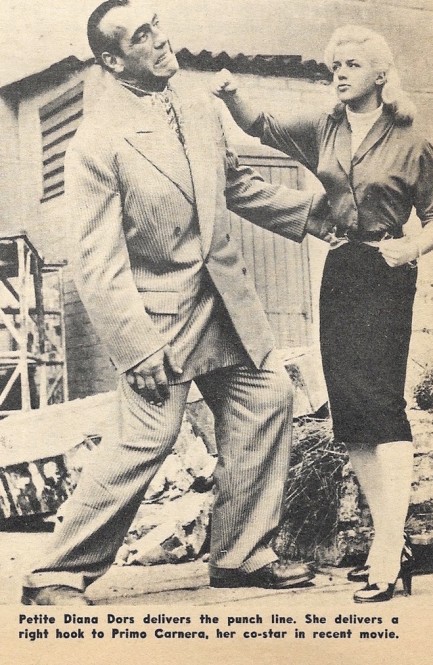 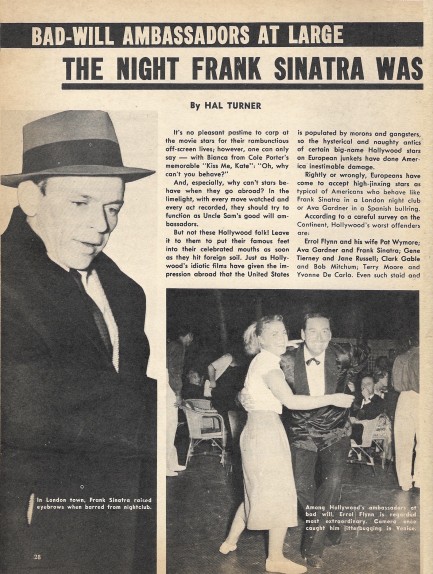 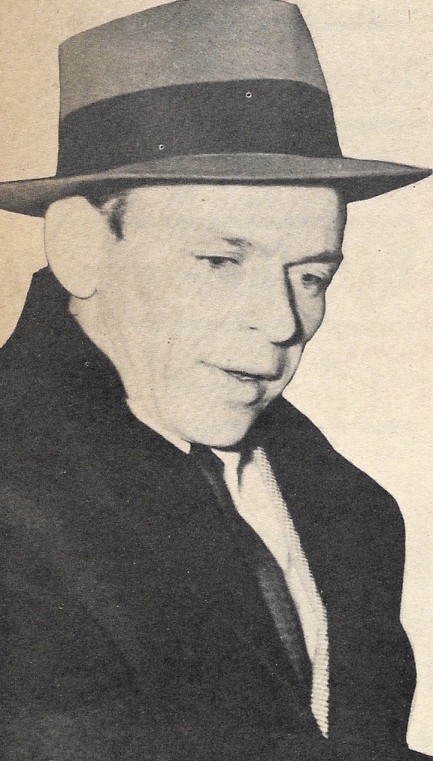 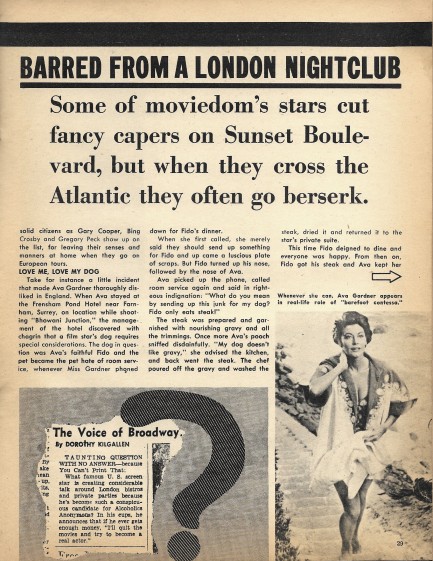 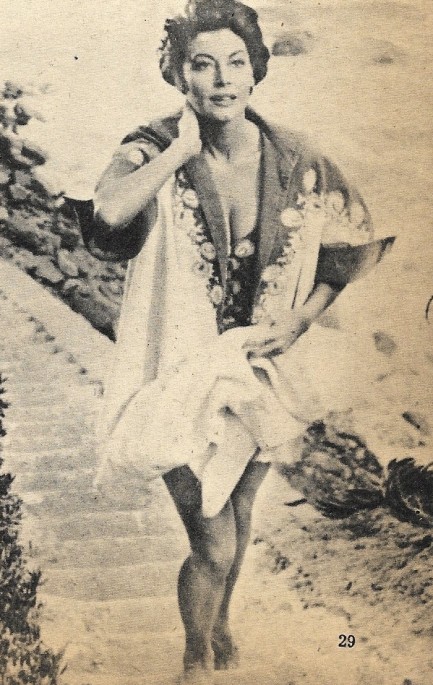 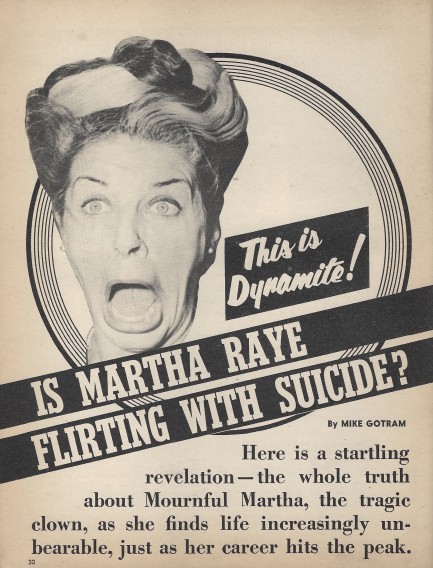 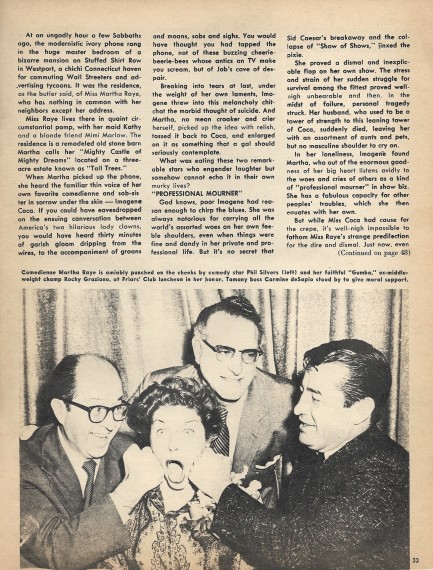 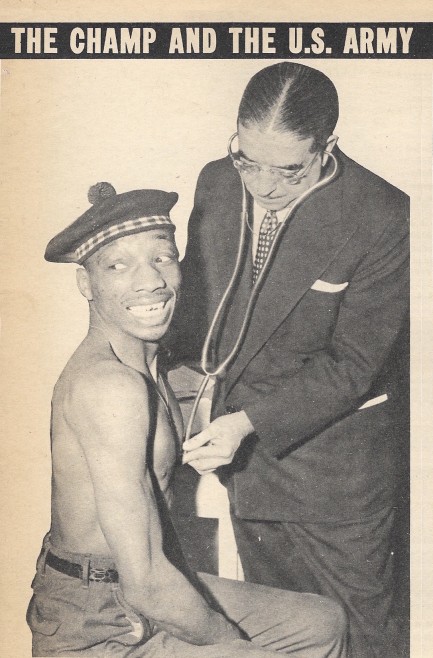 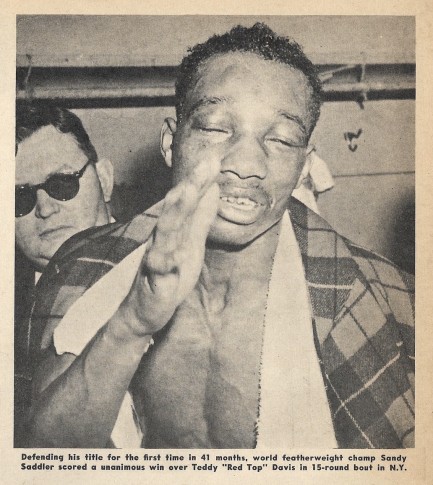 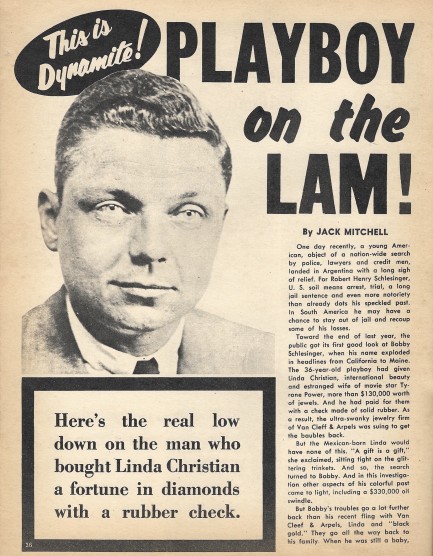 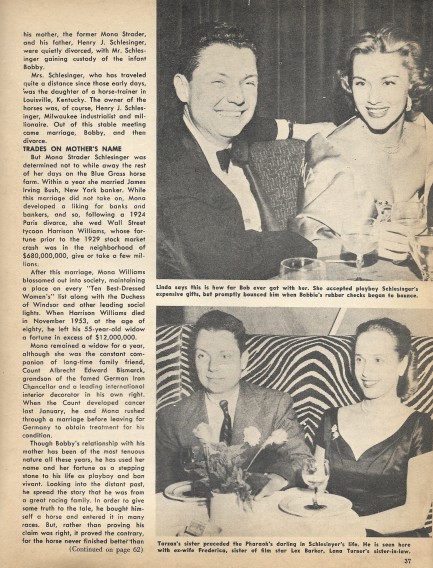 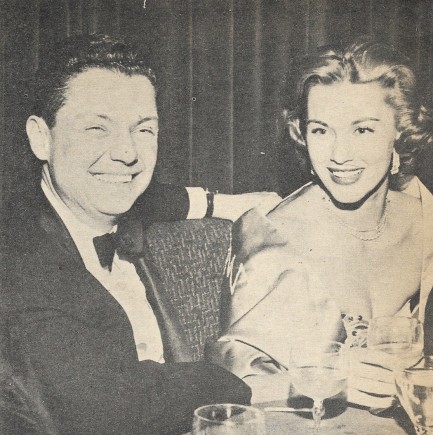 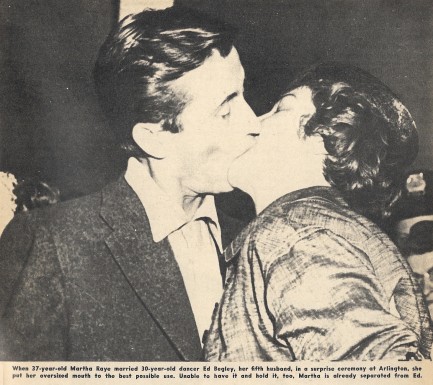 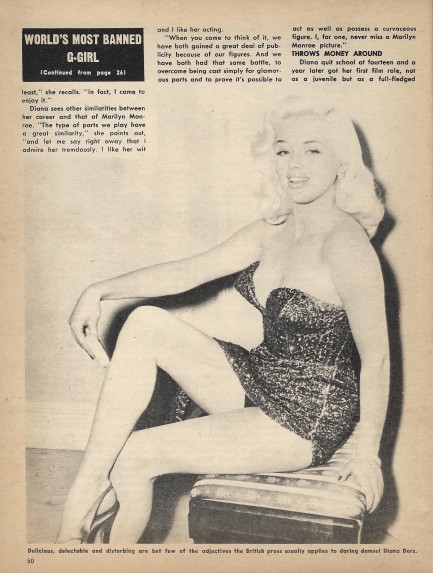
 In Lincoln Heights Jail, that is. 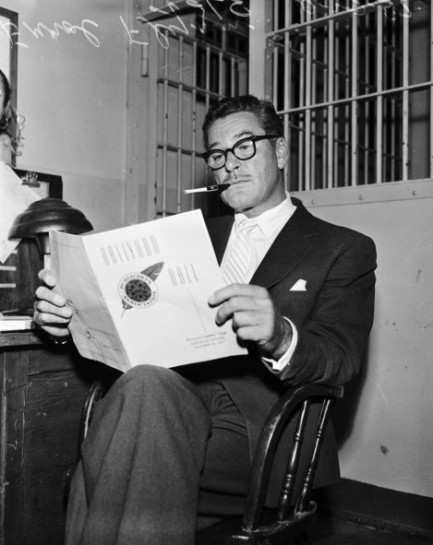
If you suspect the jailhouse photo above is associated with a good story you’re correct. Hollywood party animal Errol Flynn, pictured here in L.A.’s Lincoln Heights Jail, was arrested for public intoxication along with 21-year-old Irish aspiring actress Maura Fitzgibbons. It was an unexpected end to what was supposed to have been a celebratory night. A couple of hours earlier Flynn and Fitzgibbons had been at the Riviera Country Club in Pacific Palisades where the Publicists’ Association was staging an annual costume party called The Ballyhoo Ball. When Flynn and Fitzgibbons made their entrance a man approached for an autograph. Flynn explained, politely according to witnesses, that he would comply but never socialized or signed autographs until he had a drink in his hand. But the man insisted on an immediate autograph—he said the hatcheck girl was his wife and a big Flynn fan. 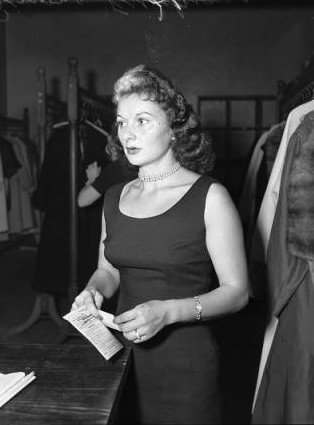 Flynn reluctantly let himself be led by this insistent man to the hatcheck stand, whereupon he saw that the man’s wife, who appears in the photo at right, was attractive. Since Flynn was a consummate horndog, he suddenly became eager to comply and not only signed an autograph, but even managed to steal a kiss on the cheek. Making polite chit-chat afterward, Flynn asked the man what he did for a living and learned that he was a cop. Or at least said he was. But since the man was in civilian clothes, Flynn said, “If you’re a cop where’s your badge?” Or something to that effect. When the man produced a badge Flynn grabbed it and tossed it to his date Fitzgibbons. This was a costume party, remember, so it’s quite possible Flynn never believed him. And it’s virtually certain the cop never considered that the situation might make any claim to be a cop appear to be a prank. In any case he got upset and arrested Flynn and Fitzgibbons. Flynn reluctantly let himself be led by this insistent man to the hatcheck stand, whereupon he saw that the man’s wife, who appears in the photo at right, was attractive. Since Flynn was a consummate horndog, he suddenly became eager to comply and not only signed an autograph, but even managed to steal a kiss on the cheek. Making polite chit-chat afterward, Flynn asked the man what he did for a living and learned that he was a cop. Or at least said he was. But since the man was in civilian clothes, Flynn said, “If you’re a cop where’s your badge?” Or something to that effect. When the man produced a badge Flynn grabbed it and tossed it to his date Fitzgibbons. This was a costume party, remember, so it’s quite possible Flynn never believed him. And it’s virtually certain the cop never considered that the situation might make any claim to be a cop appear to be a prank. In any case he got upset and arrested Flynn and Fitzgibbons. Once at the Lincoln Heights Jail the police either decided the arresting officer—whose story was markedly different from Flynn’s, Fitzgibbons’ and several other witnesses—had been overzealous. Or perhaps they simply decided to show a little preferential treatment to a movie star. In any case, they offered to let Flynn go with a warning. But the actor was indignant: “I want to be arrested. I want the whole world to know of the injustice of this deed.” So the cops tossed Flynn in a cell with a group of Mexican drunk and disorderlies who were still singing tequila-fueled ranchero songs. Even as late as 1957 Flynn was one of the most recognizable men in the world, so when the realization struck the detainees that the newly arrived drunk and disorderly was Errol Flynn everyone stared in stunned amazement. Then they began shouting, “Viva El Capitán Blood! Viva El Capitán Blood!” They started up the ranchero songs with renewed vigor, and Flynn sang along in the choruses. As for Fitzgibbons, below, she never earned a single credited role in Hollywood, which makes her Ballyhoo Ball arrest the height of her fame. That all happened in the wee hours today in 1957.
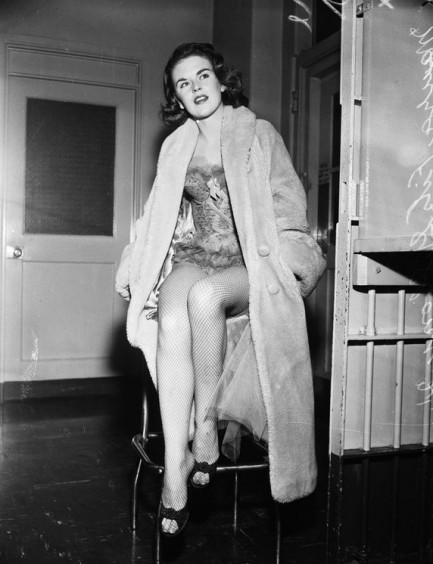 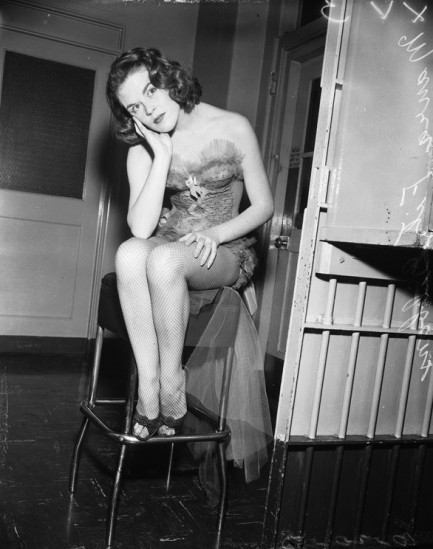

|
 |

The headlines that mattered yesteryear.
1945—Churchill Given the Sack
In spite of admiring Winston Churchill as a great wartime leader, Britons elect
Clement Attlee the nation's new prime minister in a sweeping victory for the Labour Party over the Conservatives. 1952—Evita Peron Dies
Eva Duarte de Peron, aka Evita, wife of the president of the Argentine Republic, dies from cancer at age 33. Evita had brought the working classes into a position of political power never witnessed before, but was hated by the nation's powerful military class. She is lain to rest in Milan, Italy in a secret grave under a nun's name, but is eventually returned to Argentina for reburial beside her husband in 1974. 1943—Mussolini Calls It Quits
Italian dictator Benito Mussolini steps down as head of the armed forces and the government. It soon becomes clear that Il Duce did not relinquish power voluntarily, but was forced to resign after former Fascist colleagues turned against him. He is later installed by Germany as leader of the Italian Social Republic in the north of the country, but is killed by partisans in 1945. 1915—Ship Capsizes on Lake Michigan
During an outing arranged by Western Electric Co. for its employees and their families, the passenger ship Eastland capsizes in Lake Michigan due to unequal weight distribution. 844 people die, including all the members of 22 different families. 1980—Peter Sellers Dies
British movie star Peter Sellers, whose roles in Dr. Strangelove, Being There and the Pink Panther films established him as the greatest comedic actor of his generation, dies of a heart attack at age fifty-four.
|

|
|

It's easy. We have an uploader that makes it a snap. Use it to submit your art, text, header, and subhead. Your post can be funny, serious, or anything in between, as long as it's vintage pulp. You'll get a byline and experience the fleeting pride of free authorship. We'll edit your post for typos, but the rest is up to you. Click here to give us your best shot.

|
|





















 as a great place to go for thrills. During the 1980s, Ibiza or Mykonos. The 90s, Thailand or Goa. The 00s, Tulum. Havana wasn't unusual in terms of what it offered. Bigger, yes. More convenient for Americans, for sure. But numerous far flung locales have served as paradises for foreign visitors to lose themselves and get crazy.
as a great place to go for thrills. During the 1980s, Ibiza or Mykonos. The 90s, Thailand or Goa. The 00s, Tulum. Havana wasn't unusual in terms of what it offered. Bigger, yes. More convenient for Americans, for sure. But numerous far flung locales have served as paradises for foreign visitors to lose themselves and get crazy. type of expatriate experience. It's unavoidable. A friend of ours lived in a stick shack on Cayos Cochinos for an entire year and he was still considered a rich foreigner. Everyone knows you have a choice. The Americans who partied in Cuba could never have been anything but wealthy invaders, no matter the reality of their finances, or the inclusiveness their sensibilities.
type of expatriate experience. It's unavoidable. A friend of ours lived in a stick shack on Cayos Cochinos for an entire year and he was still considered a rich foreigner. Everyone knows you have a choice. The Americans who partied in Cuba could never have been anything but wealthy invaders, no matter the reality of their finances, or the inclusiveness their sensibilities. look at Havana partying shots we don't quite see oblivious, entitled people, because we know it isn't that simple. Most of them knew what was percolating. Stability was diminishing fast. There was a dissolved parliament, large protests, a 1953 battle in Santiago de Cuba, and other signposts on the way to change. It was clear the fun could never last.
look at Havana partying shots we don't quite see oblivious, entitled people, because we know it isn't that simple. Most of them knew what was percolating. Stability was diminishing fast. There was a dissolved parliament, large protests, a 1953 battle in Santiago de Cuba, and other signposts on the way to change. It was clear the fun could never last. An ice cream vendor patiently waits for potential customers to emerge from the Capri Hotel and Casino, 1958.
An ice cream vendor patiently waits for potential customers to emerge from the Capri Hotel and Casino, 1958. Fashion model Jean Patchett and author Ernest Hemingway, who habitually went shirtless, lounge at Finca Vigia, his house in Cuba, 1950.
Fashion model Jean Patchett and author Ernest Hemingway, who habitually went shirtless, lounge at Finca Vigia, his house in Cuba, 1950. Above, Constantino Ribalaigua Vert, the "Cocktail King of Havana," inventor of the Papa Doble daiquiri, and owner of the famed bar La Floridita.
Above, Constantino Ribalaigua Vert, the "Cocktail King of Havana," inventor of the Papa Doble daiquiri, and owner of the famed bar La Floridita.
 Liberace performs on stage at the Tropicana with headline dancer Ana Gloria Varona, 1954.
Liberace performs on stage at the Tropicana with headline dancer Ana Gloria Varona, 1954. A Coke and a smile from two soft drink vendors.
A Coke and a smile from two soft drink vendors. Patrons enjoy drinks at La Floridita, 1955.
Patrons enjoy drinks at La Floridita, 1955. Cuban writer Guillermo Cabrera Infante stands by while Marlon Brando tries his hand—or both of them—at the conga drum at Hotel Packard, 1956.
Cuban writer Guillermo Cabrera Infante stands by while Marlon Brando tries his hand—or both of them—at the conga drum at Hotel Packard, 1956. Mafia kingpin Meyer Lansky, on the right in this shot, attends the opening of the Hotel Riviera in December 1957.
Mafia kingpin Meyer Lansky, on the right in this shot, attends the opening of the Hotel Riviera in December 1957. Famed entertainer Zulema dances the rhumba at the Zombie Club, 1946.
Famed entertainer Zulema dances the rhumba at the Zombie Club, 1946. Three women liven up the room from their perch on the bar at Cabaret Kursal.
Three women liven up the room from their perch on the bar at Cabaret Kursal. Cesar Romero and Tyrone Power enjoy a drink and a chat at Sloppy Joe's Bar.
Cesar Romero and Tyrone Power enjoy a drink and a chat at Sloppy Joe's Bar. Revelers including Errol Flynn and Desi Arnaz, Jr. form a conga line during the Yoruba festival known as Dia de Babalú-Ayé.
Revelers including Errol Flynn and Desi Arnaz, Jr. form a conga line during the Yoruba festival known as Dia de Babalú-Ayé. José Abeal Otero, founder of Sloppy Joe's Bar, mixes up a giant batch of liquid magic. No, this isn't the same person as above, Ribalaigua. They were both small, dapper guys.
José Abeal Otero, founder of Sloppy Joe's Bar, mixes up a giant batch of liquid magic. No, this isn't the same person as above, Ribalaigua. They were both small, dapper guys. A firebreather thrills onlookers in front of the Saratoga Hotel, 1949.
A firebreather thrills onlookers in front of the Saratoga Hotel, 1949. This photo shows Nat King Cole and his wife Maria Cole, along with Martin Fox, who was the owner of the Tropicana, accompanied by his wife Ofelia and an unknown fifth party.
This photo shows Nat King Cole and his wife Maria Cole, along with Martin Fox, who was the owner of the Tropicana, accompanied by his wife Ofelia and an unknown fifth party. U.S. born vedette and movie star Tongolele, aka Yolanda Montes, poses outside the Capri Hotel and Casino, 1958.
U.S. born vedette and movie star Tongolele, aka Yolanda Montes, poses outside the Capri Hotel and Casino, 1958. Meme Solis and Elena Burke pose at the entrance to the 21 Club, located in the Capri Hotel.
Meme Solis and Elena Burke pose at the entrance to the 21 Club, located in the Capri Hotel.
 These photos show Silvano Chueg Echevarría, a master of percussion and an iconic musical personage. Let's go back to that Marlon Brando photo for a sec. Brando was an aficionado of percussive instruments. During that 1956 jaunt to Cuba he made it known that he wanted to buy drums from real percussionists. One of the musicians he met was Echevarría. All the Havana percussionists knew of Brando, of course, but thought he was a musical dilettante. At some point he finagled his way onto a nightclub stage, sat in with a band, and truly amazed onlookers with his ability on the conga. He wasn't a master, but he was pretty good. He won respect, and bought his drums.
These photos show Silvano Chueg Echevarría, a master of percussion and an iconic musical personage. Let's go back to that Marlon Brando photo for a sec. Brando was an aficionado of percussive instruments. During that 1956 jaunt to Cuba he made it known that he wanted to buy drums from real percussionists. One of the musicians he met was Echevarría. All the Havana percussionists knew of Brando, of course, but thought he was a musical dilettante. At some point he finagled his way onto a nightclub stage, sat in with a band, and truly amazed onlookers with his ability on the conga. He wasn't a master, but he was pretty good. He won respect, and bought his drums. Raquel Revuelta, Manuel Corrales, and Mariano Rodriguez leave the famed bar Bodeguita del Medio and walk through the Havana night to other locales, other adventures, 1958.
Raquel Revuelta, Manuel Corrales, and Mariano Rodriguez leave the famed bar Bodeguita del Medio and walk through the Havana night to other locales, other adventures, 1958.








































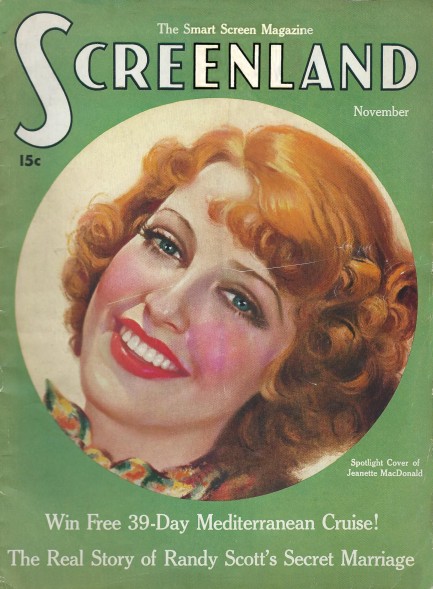
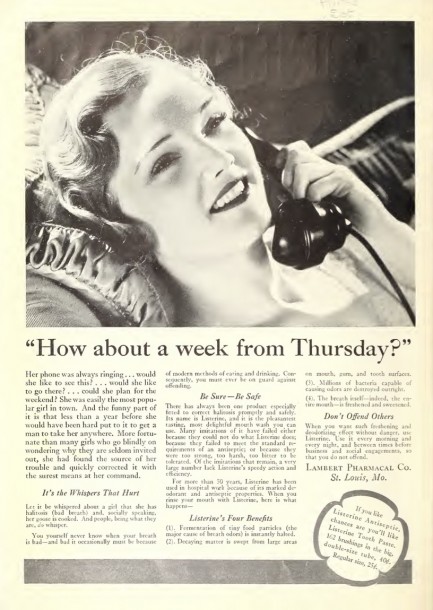
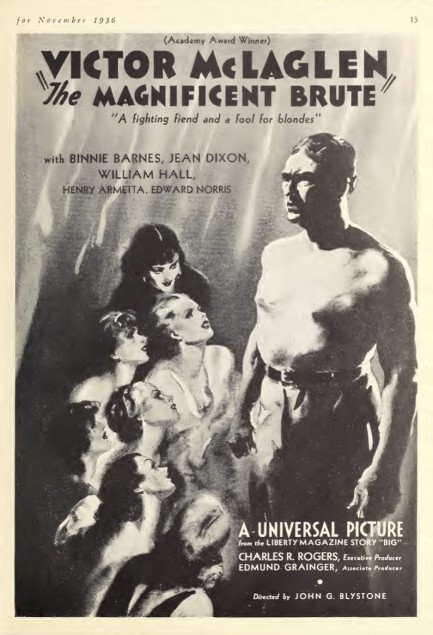

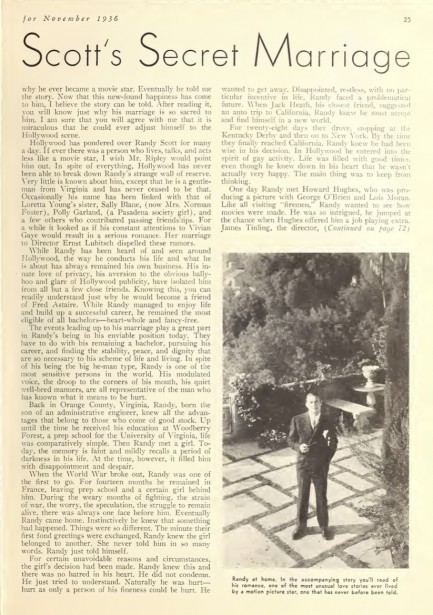
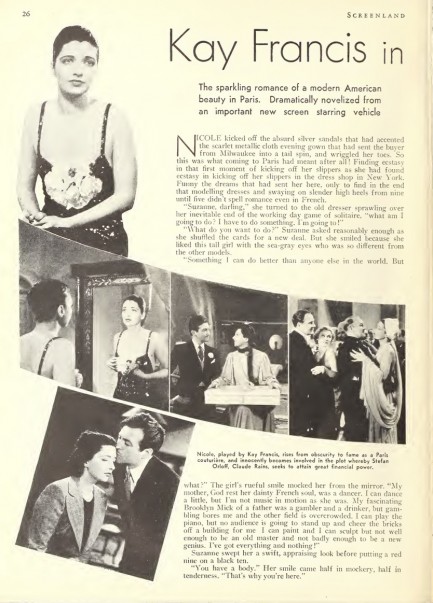
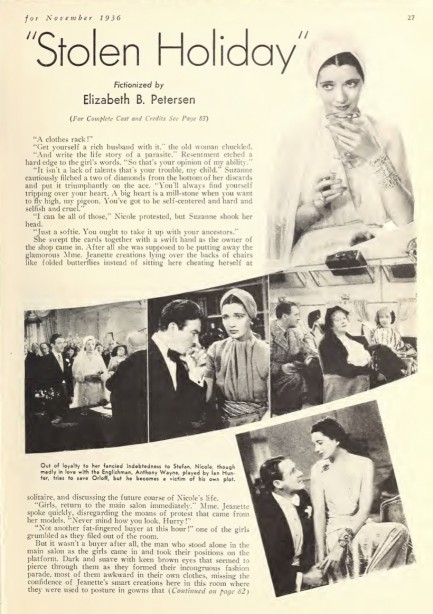
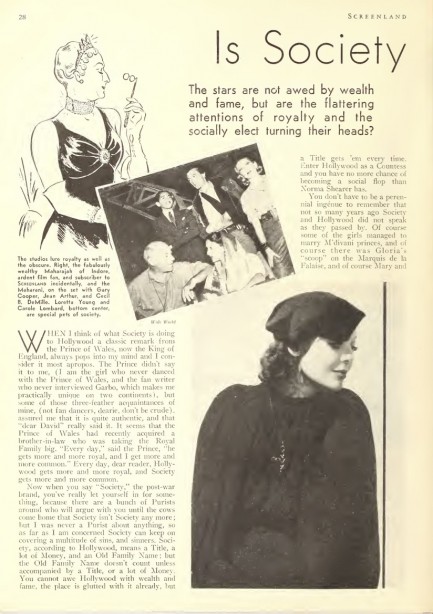
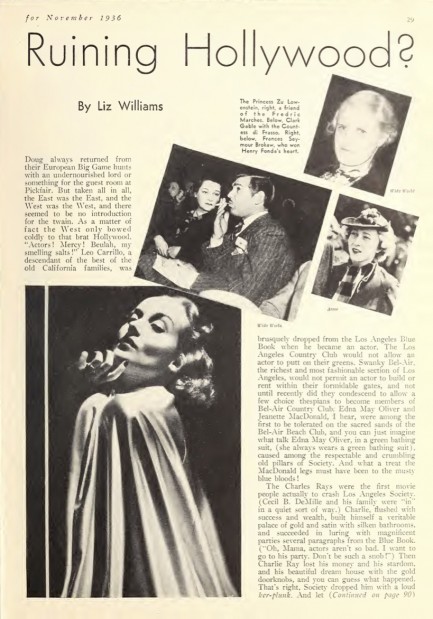
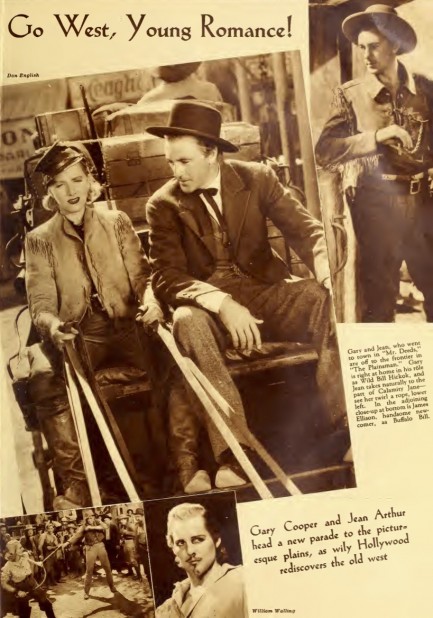
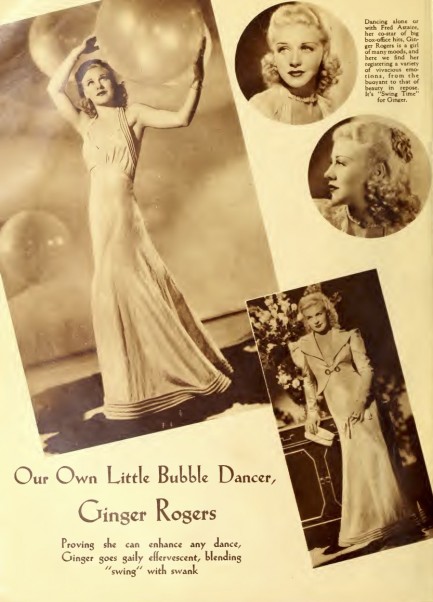
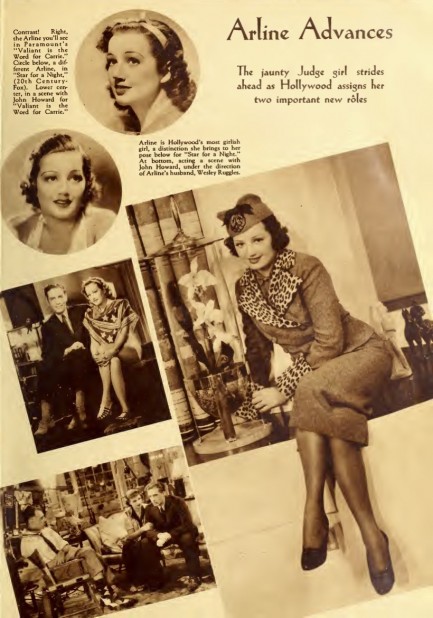
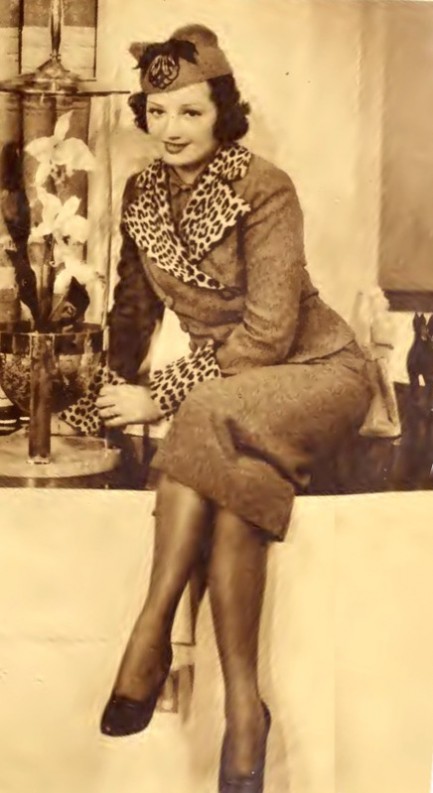
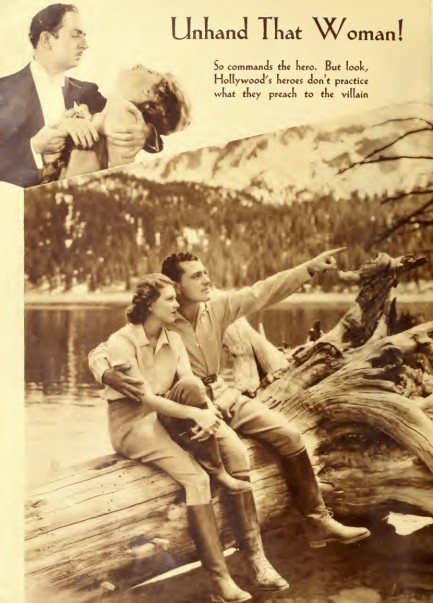
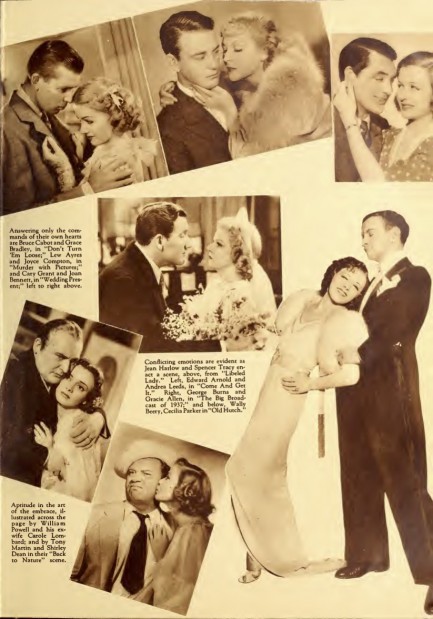

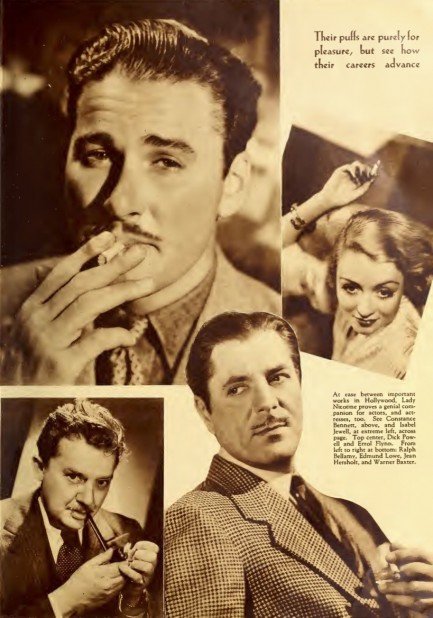
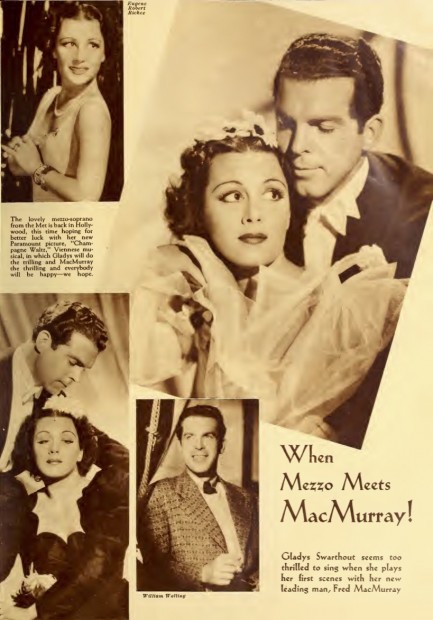
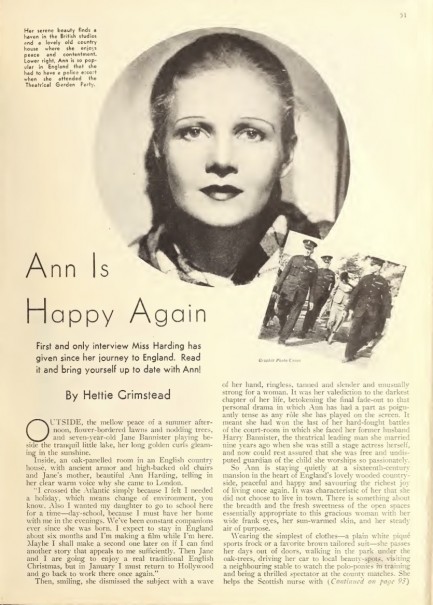
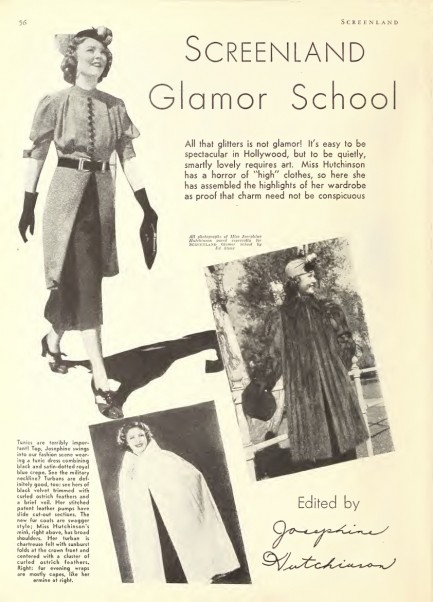
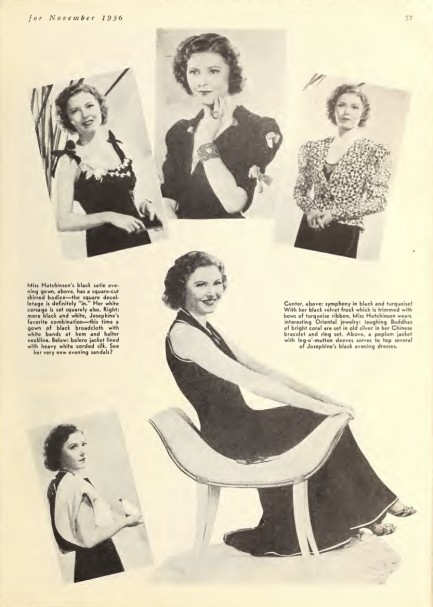
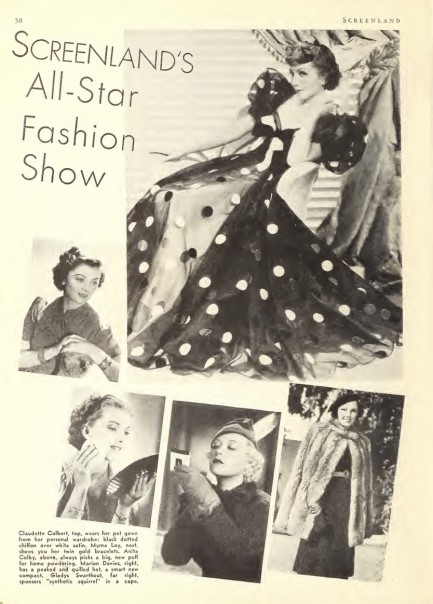
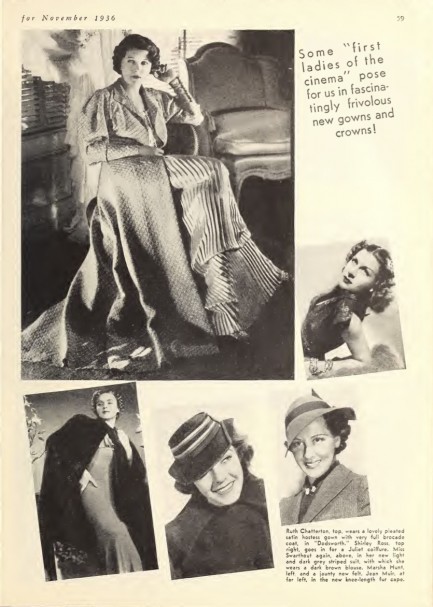
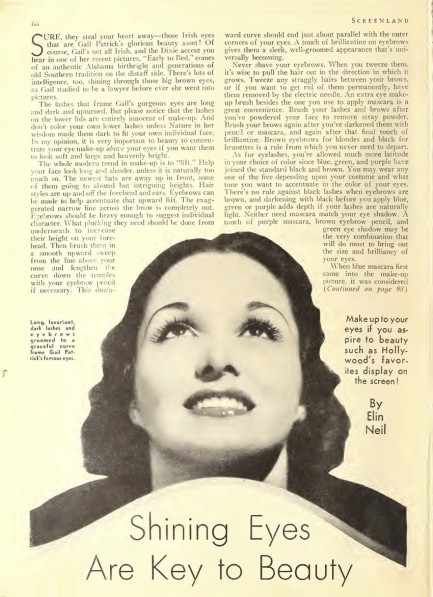
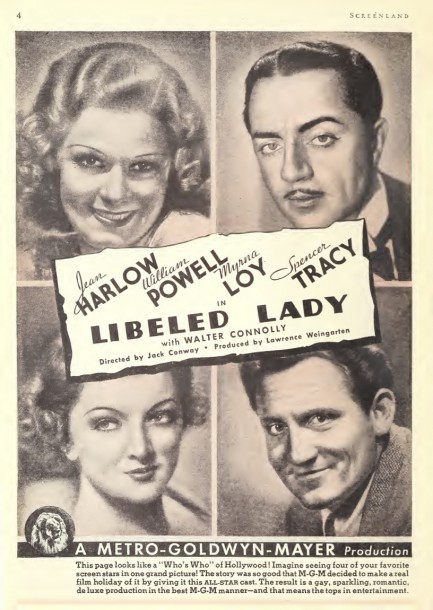
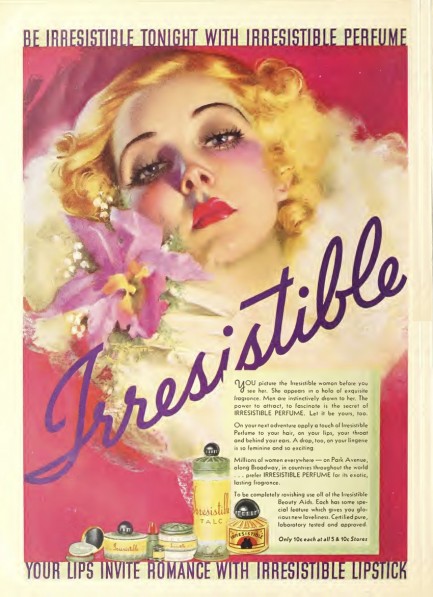


 and we seem to be correct. Judge for yourself at right. At least her boob punishment was offset by the fact that her outfit was too flimsy to include one of the deadly corsets that sometimes made their way around stars' waists.
and we seem to be correct. Judge for yourself at right. At least her boob punishment was offset by the fact that her outfit was too flimsy to include one of the deadly corsets that sometimes made their way around stars' waists.


































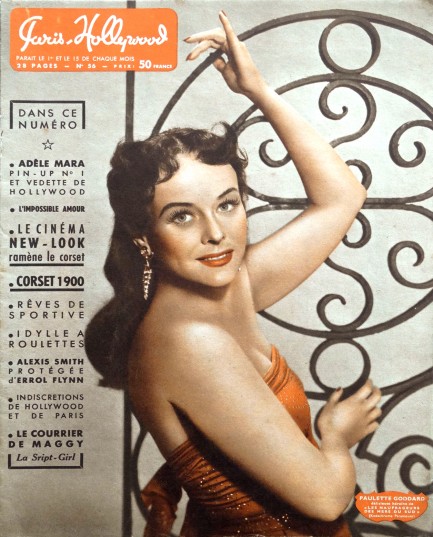
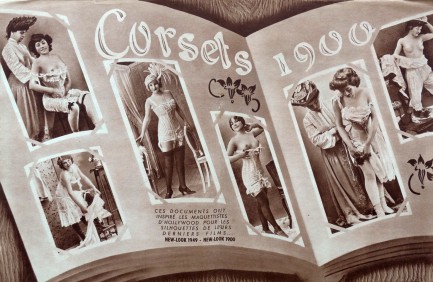
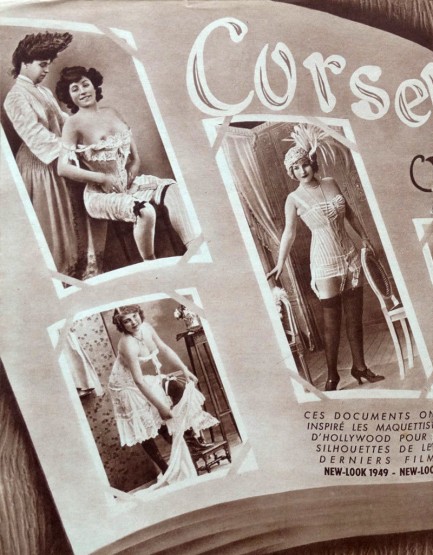
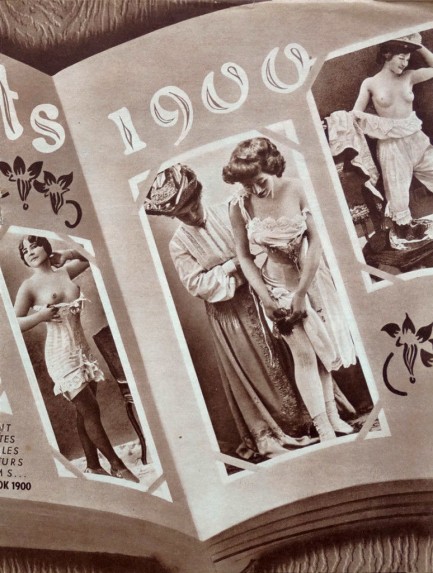
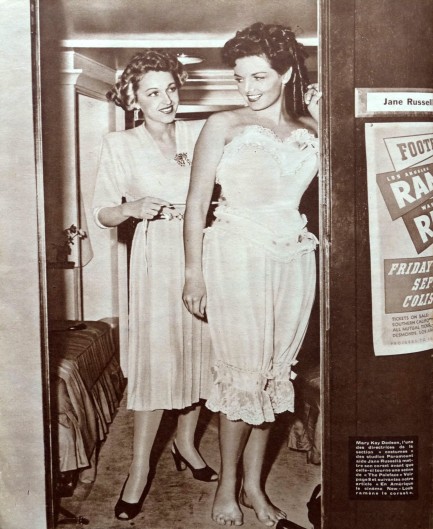
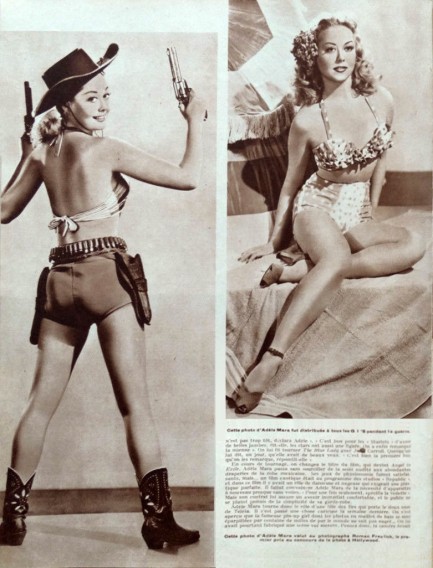
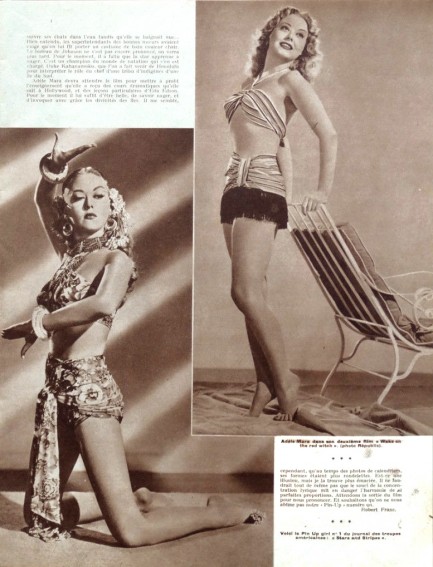
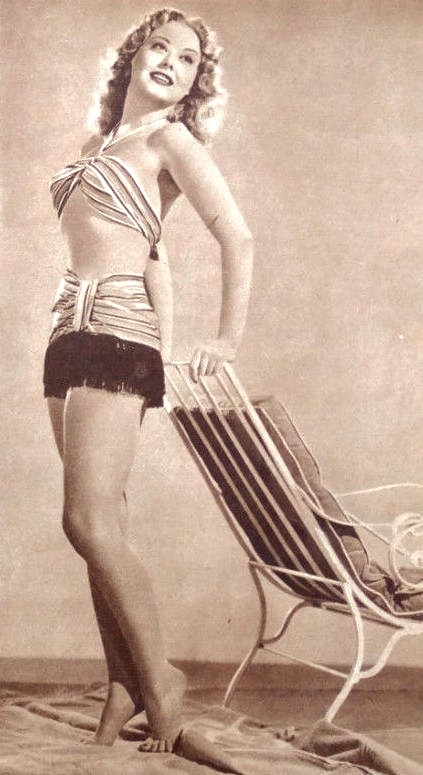
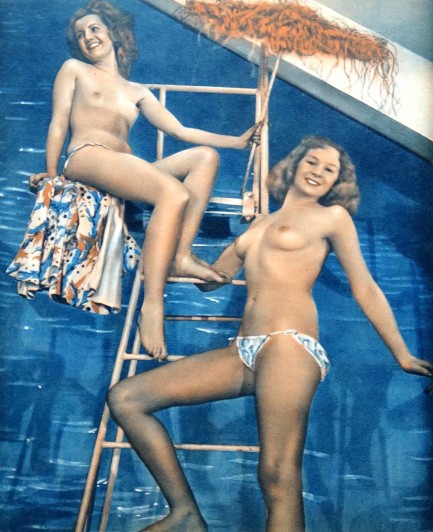
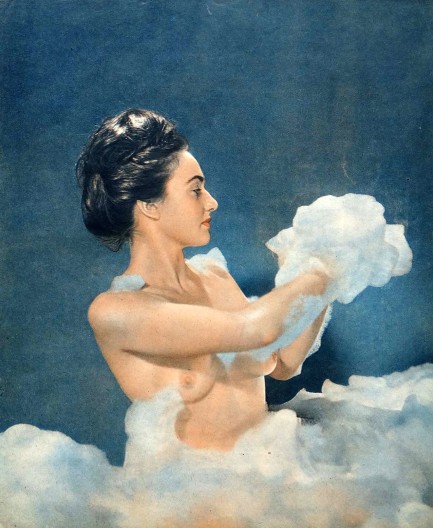
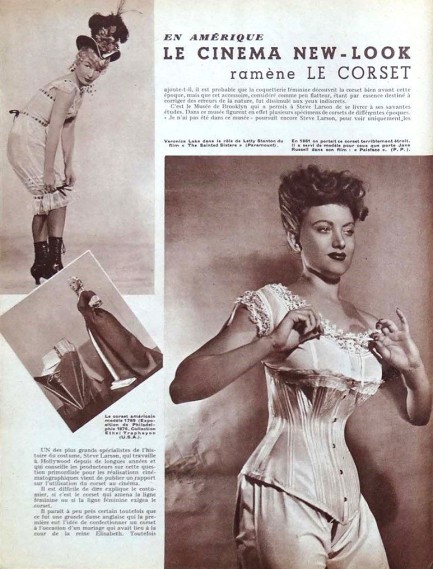
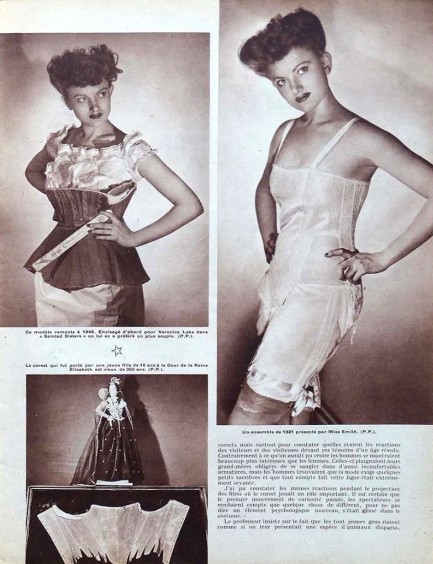
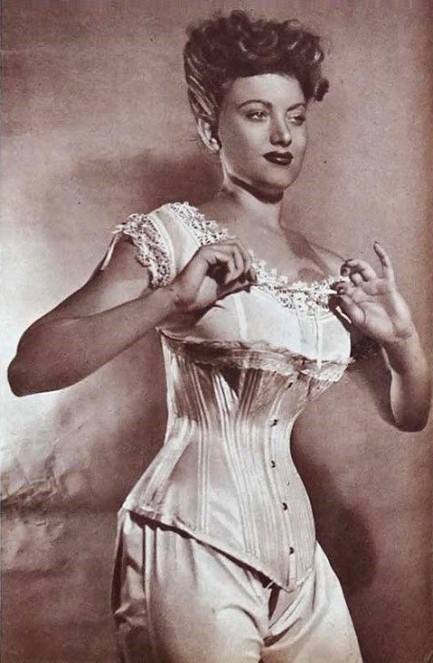
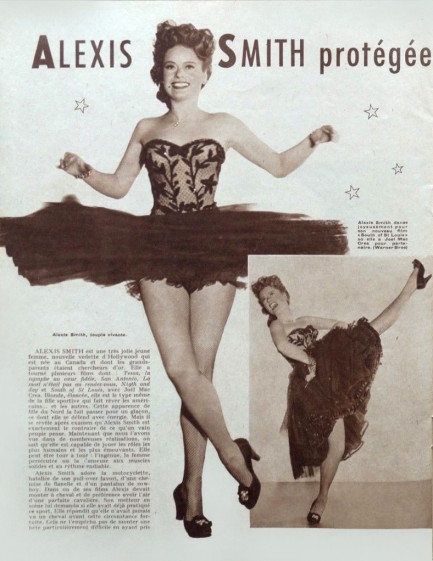
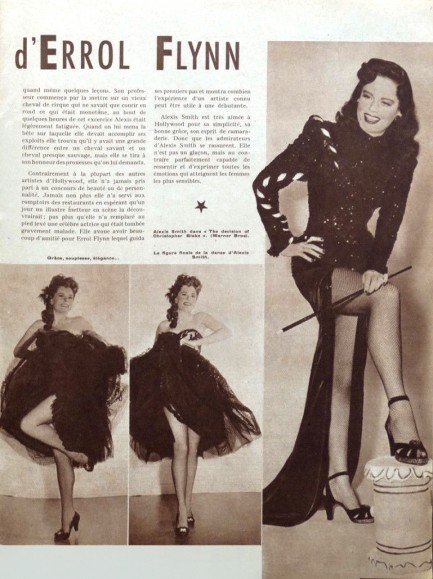
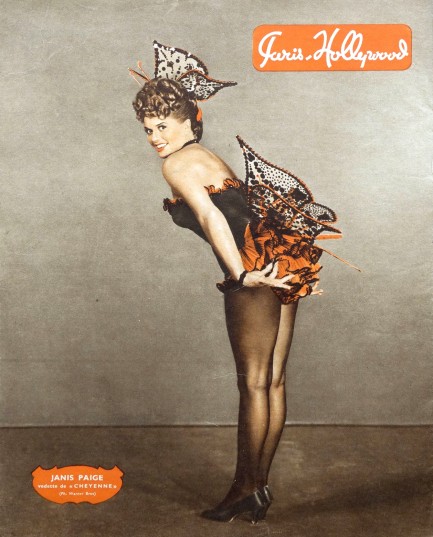


 but both spouses were fine with the set-up until von Thyssen accidentally ran into Dyer and Marquand in Carrol's nightclub in Paris and was forced to save face by starting a fight. The couple soon divorced, but not because of infidelity, as many accounts claim. What finally broke the couple up was that Dyer dropped Marquand. Dynamite tells readers: “[von Thyssen] has ditched his sloe-eyed Baroness because now she's decided she loves him.”
but both spouses were fine with the set-up until von Thyssen accidentally ran into Dyer and Marquand in Carrol's nightclub in Paris and was forced to save face by starting a fight. The couple soon divorced, but not because of infidelity, as many accounts claim. What finally broke the couple up was that Dyer dropped Marquand. Dynamite tells readers: “[von Thyssen] has ditched his sloe-eyed Baroness because now she's decided she loves him.”































 Flynn reluctantly let himself be led by this insistent man to the hatcheck stand, whereupon he saw that the man’s wife, who appears in the photo at right, was attractive. Since Flynn was a consummate horndog, he suddenly became eager to comply and not only signed an autograph, but even managed to steal a kiss on the cheek. Making polite chit-chat afterward, Flynn asked the man what he did for a living and learned that he was a cop. Or at least said he was. But since the man was in civilian clothes, Flynn said, “If you’re a cop where’s your badge?” Or something to that effect. When the man produced a badge Flynn grabbed it and tossed it to his date Fitzgibbons. This was a costume party, remember, so it’s quite possible Flynn never believed him. And it’s virtually certain the cop never considered that the situation might make any claim to be a cop appear to be a prank. In any case he got upset and arrested Flynn and Fitzgibbons.
Flynn reluctantly let himself be led by this insistent man to the hatcheck stand, whereupon he saw that the man’s wife, who appears in the photo at right, was attractive. Since Flynn was a consummate horndog, he suddenly became eager to comply and not only signed an autograph, but even managed to steal a kiss on the cheek. Making polite chit-chat afterward, Flynn asked the man what he did for a living and learned that he was a cop. Or at least said he was. But since the man was in civilian clothes, Flynn said, “If you’re a cop where’s your badge?” Or something to that effect. When the man produced a badge Flynn grabbed it and tossed it to his date Fitzgibbons. This was a costume party, remember, so it’s quite possible Flynn never believed him. And it’s virtually certain the cop never considered that the situation might make any claim to be a cop appear to be a prank. In any case he got upset and arrested Flynn and Fitzgibbons.


